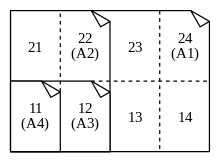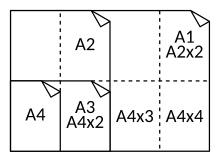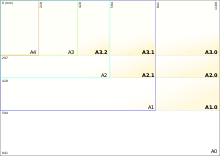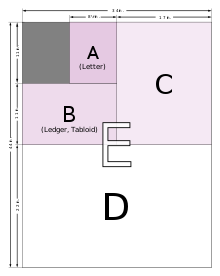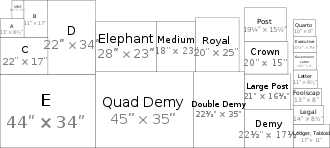Размеры бумаги имеют значение, и выбор правильного размера бумаги – это не только вопрос денег

Размеры бумаги имеют значение, и выбор правильного размера бумаги – это не только вопрос денег
Считайте, что формат бумаги – это ‘рамка’ для вашего сообщения. Для всего – от печатных картотек до рекламных щитов – требуется бумага определенных размеров. А если вы фотограф или дизайнер, то вам необходимо знать о различных вариантах размеров и преимуществах каждого размера
Размеры бумаги также различаются в разных странах мира. Если вы живете в США, вы можете выбрать формат Letter, в то время как кто-то в Европе может выбрать формат A4, и они не совсем одинаковы
Найдите Международный стандарт размеров бумаги
Легкодоступный указатель стандартных размеров бумаги, используемых во всем мире, помогает сделать принтеры счастливыми – и устранить любую путаницу
PaperSizes – полезный сайт с быстрым доступом почти ко всем стандартам размеров, используемым сегодня. Этот аккуратный и чистый ресурс перечисляет размеры более 250 международных форматов бумаги в мм и дюймах
В большинстве ситуаций вы будете следовать стандарту ISO 216 серия размеров бумаги , который в настоящее время принят во всем мире. Но вы также заметите на этой странице Википедии, что этому стандарту не следуют Канада, США, Мексика или Доминиканская Республика
PaperSizes.io поможет вам найти нужный размер и, при необходимости, увеличить (или уменьшить) его до размера бумаги, принятого в указанных странах
Интересный совет: Стандартные размеры бумаги ISO имеют аккуратные математические соотношения. Это также позволяет легко увеличивать или уменьшать их масштаб. Так утверждает сам сайт:
‘Если разрезать лист А4 пополам, получится два листа А5, и так далее. Брошюра любого размера может быть изготовлена с использованием бумаги следующего большего размера, например, листы формата А3 складываются для изготовления брошюр формата А4.’
Хотите масштабировать страницу формата А до следующего большего размера? Для идеальной посадки увеличьте его на 141 процент. Эта легкость отсутствует в американскихамериканских форматах бумаги, к сожалению
Разница между форматами бумаги расстраивает вас на каждом углу? Что вы думаете о PaperSizes.io?
Image Credit: Nuk2013 via Shutterstock
Почти до конца 18 века не существовало каких-либо стандартов для формата бумаг. Невозможность соблюдения пропорций создавала ряд сложностей в книгопечатании. Много бумаги уходило в обрезь и попросту выбрасывалось, что, конечно же, сказывалось на себестоимости печатных изданий.
Популярные виды форматов по стандартам ISO 216
Такое положение дел сохранялось до тех пор, пока немецкий ученый Вальтер Лихтенберг обратил внимание на то, что сложенный пополам лист определенного размера сохраняет свои пропорции и при дальнейших складываниях – пополам, вчетверо, вшестеро и т.д. При условии, что этот определенный размер предполагает соотношение длины и ширины листа как единица к квадратному корню из двух.
Но сама система стандартизации появилась лишь в начале ХХ века. С тех пор в мире существует несколько систем стандартов формата бумаг:
- ISO 216
- Североамериканский
- Японский
Разные страны используют те стандарты, которые считают наиболее комфортными для себя.
Международный стандарт формата бумаг ISO 216
Это наиболее популярный стандарт формата бумаги, который принят большинством стран, в том числе и в России.
Для больших чертежей используют ватман
За основание стандарта взята метрическая система мер, стартовое значение равно одному квадратному метру (формат А0). Остальные форматы имеют одинаковое соотношение сторон 1:1,41.
В стандарте ISO 216 cуществует три серии форматов — А, В и С. Размеры форматов бумаги в миллиметрах приведены в таблице:
| Формат | Серия A | Серия B | Серия C |
| Размер | мм | мм | мм |
| 0 | 841 x 1189 | 1000 x 1414 | 917 x 1297 |
| 1 | 594 x 841 | 707 x 1000 | 648 x 917 |
| 2 | 420 x 594 | 500 x 707 | 458 x 648 |
| 3 | 297 x 420 | 353 x 500 | 324 x 458 |
| 4 | 210 x 297 | 250 x 353 | 229 x 324 |
| 5 | 148 x 210 | 176 x 250 | 162 x 229 |
| 6 | 105 x 148 | 125 x 176 | 114 x 162 |
Все серии форматов ISO 216
Серия А предназначена для документации. Самый популярный здесь формат бумаги А4. На нем ведется вся офисная и техническая документация, выполняется подавляющее большинство чертежей, схем, лабораторных, практических, курсовых, дипломных и прочих работ.
Серия В отличается от серии А тем, что 1 м – это длина его короткой стороны, в остальном же соотношение соблюдается. Этот формат используется в полиграфии для печати книг, буклетов, паспортов, постеров и пр.
Формат серии С разработан для производства конвертов.
Для каждого типа работ существует свой вид, формат и размер бумаги
Североамериканский стандарт формата бумаги
Североамериканский стандарт формата бумаги разработан Американским национальным институтом форматов ANSI и основан не на метрической, а на дюймовой системе мер. Он применяется в Соединенных Штатах Америки, в Канаде, в Мексике, на Филиппинах и в некоторых других странах.
Североамериканские форматы листов и размеры бумаги приведены в таблице ниже:
| Классификация ANSI |
Форматы бумаги и их размеры в мм | Форматы бумаги и их размеры в дюймах | Соотношение сторон |
Похожий формат ISO |
| ANSI A | 216 x 280 | 8,5 x 11 | 1 : 1,3002 | A4 (210 x 297) |
| 216 x 356 | 8,5 x 14 | 1 : 1,6471 | ||
| ANSI B | 279 x 432 | 11 x 17 | 1 : 1,5455 | A3 (297 x 420) |
| ANSI C | 432 x 559 | 17 x 22 | 1 : 1,2941 | A2 (420 x 594) |
| ANSI D | 559 x 864 | 22 x 34 | 1 : 1,5455 | A1 (594 x 841) |
| ANSI E | 864 x 1121 | 34 x 44 | 1 : 1,2941 | A0 (841 x 1189) |
Размеры форматов североамериканских стандартов бумаги в миллиметрах и дюймах
Для визуального сравнения данных мы преобразовали значение в дюймах в миллиметры и представили европейский формат, максимально близкий к североамериканскому.
Среди пользователей этого типа стандарта вместо скучных аббревиатур из первой колонки популярны упрощенные названия. Так формату и размеру бумаги из первой строчки таблицы соответствует обозначение «letter», размеру и формату бумаги из второй строчки – «legal». Кстати, филиппинский лист legal слегка отличается от американского: его параметры – 8,5х13 дюймов.
Третья строчка ANSI B, как правило, именуется tabloid или ledger. Вот почему журналы, выпускаемые в этом формате, у нас так и зовутся – таблоиды.
Японские стандарты бумаги
Япония использует две серии стандартов для определения формата листов бумаги и их размеров – А и В. Первый из них целиком и полностью повторяет общепринятые у нас размеры форматов бумаги А1, А2, А3, А4 и т.д. Все значения второй серии превосходят параметры ISO 216 ровно в 1,5 раза.
Форматы бумаги японской серии В и их размеры в сантиметрах приводим в таблице ниже:
| Формат | Размер, см |
| В0 | 103х145,6 |
| В1 | 72,8х103 |
| В2 | 51,5х72,8 |
| В3 | 36,4х51,5 |
| В4 | 25,7х36,4 |
| В5 | 18,2х25,7 |
| В6 | 12,8х18,2 |
| В7 | 9,1х12,8 |
Формат японских бумаг серии В с размерами в сантиметрах
Существует несколько форматов бумаги. В России их регламентирует ГОСТ 5773-90. На международном поле применяется система стандартов ISO 216, активно используемая и у нас. Также есть и другие стандарты бумаги: американские, японские и пр. Каждый вид имеет свои особенности. Рассмотрим наиболее ходовые и распространенные форматы, включая размеры бумаги, применяемые для изготовления различной полиграфической продукции.
Форматы бумаги серии А
Формат бумаги серии А, включающий более 10 размеров (А0, А1, А2, А3, А4, А5 и др.), известен каждому человеку, причем даже не связанному со сферой полиграфии. Это самая используемая размерная сетка, согласно которой длина любого листа равна его ширине, умноженной на квадратный корень из 2. Все размеры бумаги данного формата строятся от листа A0 площадью 1 м².
Формат бумаги А5
Бумага А5 (148х210 мм) широко применяется в типографиях и печатных салонах. Такой формат имеет большинство листовок, поздравительных открыток. Также на бумаге А5 печатаются различные бланки, информационные карточки, памятки и многое другое.
[gogleblock]
Формат бумаги А4
С бумагой А4 (210х297 мм) многие знакомятся еще в детстве. Именно такой формат используется в подавляющем большинстве случаев для производства альбомов для рисования. Бумага А4 незаменима в офисе. Мы регулярно видим ее в принтерах, копировальных аппаратах, МФУ.
Также на листах А4 печатаются бланки различных заявлений, анкеты, отчеты, презентации, договоры и т. п. Многие каталоги, журналы и другие периодические издания тоже имеют данный формат.
Формат бумаги А3
На бумаге А3 (297х420 мм) печатается огромное количество полиграфии: от настенных календарей и постеров до школьного расписания, которое обычно размещается дома над учебным столом, и различных схем, таблиц, диаграмм, рисунков, небольших карт.

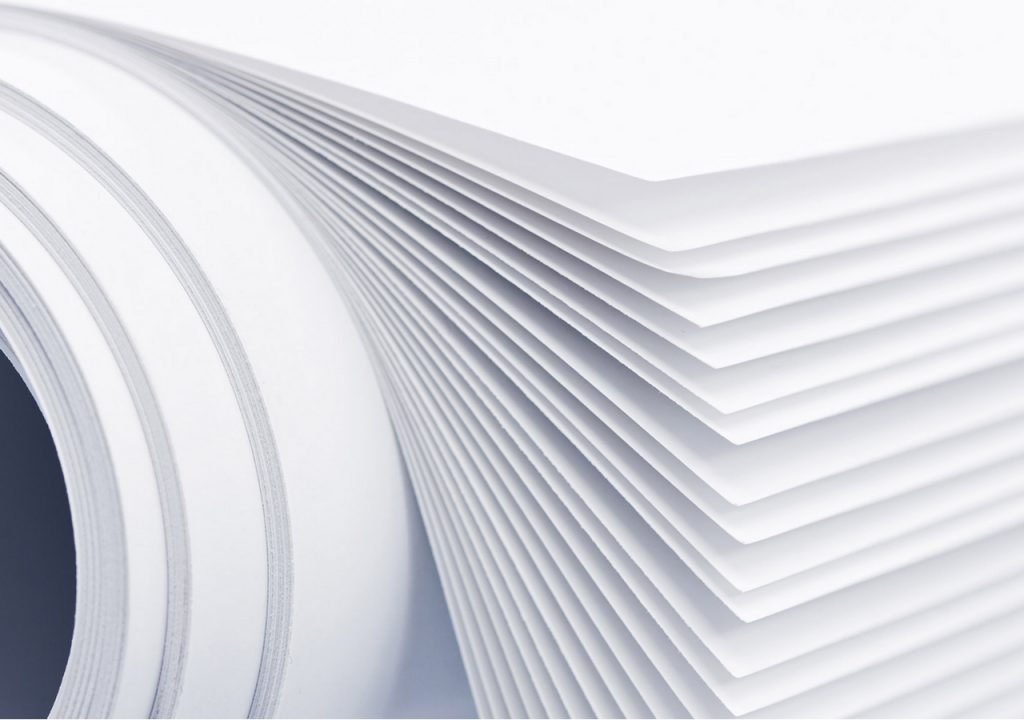
Разработка дизайна для такой продукции, как правило, предлагается типографиями Москвы как отдельная услуга.
Формат бумаги А2
Формат А2 (420х594 мм) широко используется в рекламе. Он отлично подходит для печати различных маркетинговых материалов, предназначенных для размещения на стенах в офисах, административных центрах, торговых залах и т. п. Также формат используется для распечатки лекционных плакатов.
Формат бумаги А1 и А0
Бумага А1 (594х841 мм) и А0 (841х1189 мм) применяется для печати чертежей, технических документов по дизайн-проектам и другой инженерной документации.
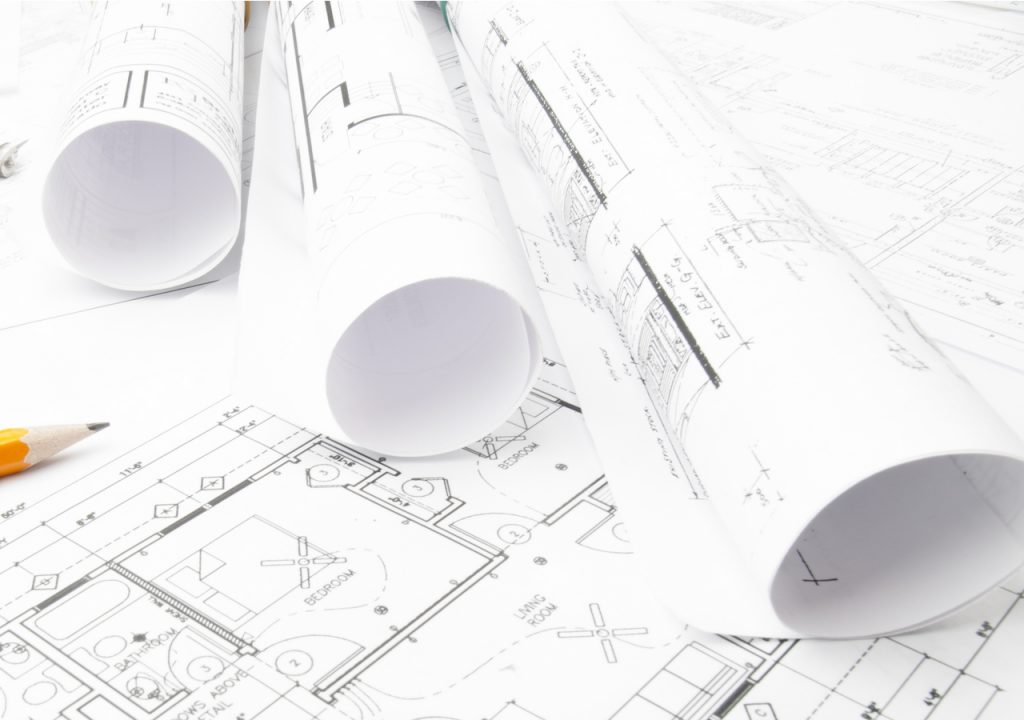
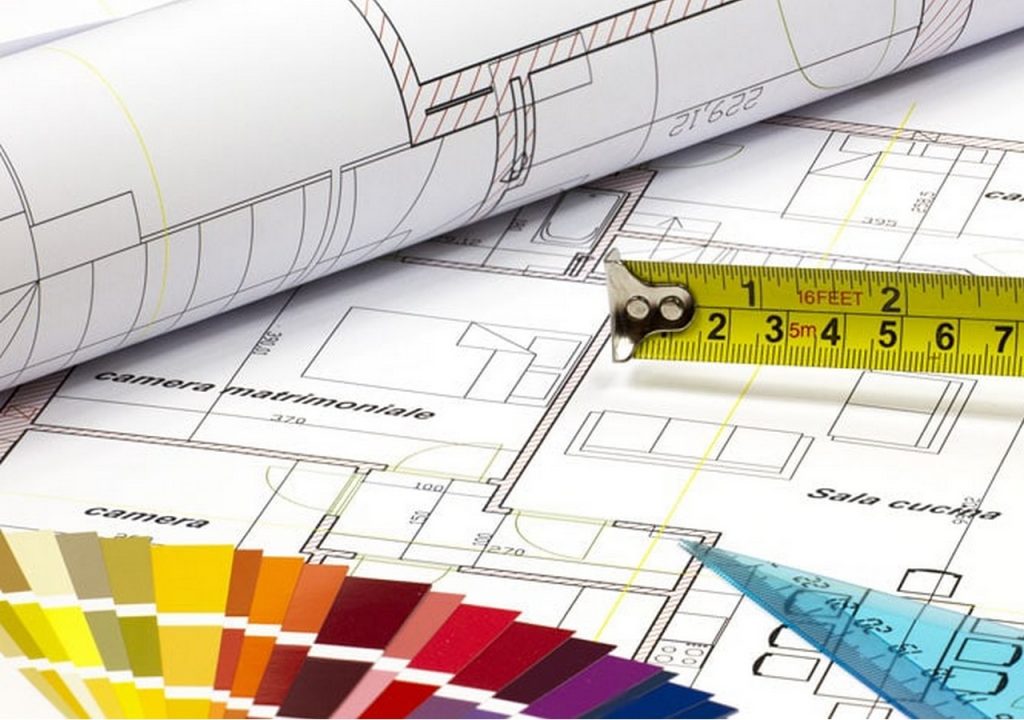
Такие форматы используются и в широкоформатной рекламной полиграфии, которая может размещаться как в помещениях, так и на улице.
Таблица размеров бумаги серии А, мм и см
| Формат | Размер, мм | Размер, см |
| А0 | 841х1189 | 84,1х118,9 |
| А1 | 594х841 | 59,4х84,1 |
| А2 | 420х594 | 42х59,4 |
| А3 | 297х420 | 29,7х42 |
| А4 | 210х297 | 21х29,7 |
| А5 | 148х210 | 14,8х21 |
| А6 | 105х148 | 10,5х14,8 |
| А7 | 74х105 | 7,4х10,5 |
| А8 | 52х74 | 5,2х7,4 |
| А9 | 37х52 | 3,7х5,2 |
| А10 | 26х37 | 2,6х3,7 |
[gogleblock]
Размеры серии А
Международные стандарты бумаги
Универсальной международной системой стандартов определения форматов бумаги считается ISO 216:1975. Принцип стандартизации здесь прост: соотношение ширины и длины листа идентично соотношению стороны и диагонали квадрата. Большинство моделей современной печатающей техники работает с форматами бумаги по ISO 216.


Система стандартов является метрической. Это позволяет округлять абсолютные значения длины / ширины листа в стандартных единицах измерения. Международный стандарт предусматривает указание размеров в миллиметрах. Как уже упоминалось выше, самым известным и широко распространенным в ISO 216 является формат серии А. Он активно используется в ЕС, России и ряде других стран.
[gogleblock]
Форматы бумаги серии В и С
В системе стандартизации есть еще одна широко распространенная серия – В. Она применяется в случаях, когда бумага формата А не подходит или при ее использовании получается большое количество отходов. Размеры В находятся между двумя соседними соответствующими значениями размеров серии А. Например, В1 по метрической шкале располагается между А0 и А1. Формат данной серии используется для печати книг, газет, различных карточек и даже игральных карт.
Также в международную стандартизацию включена серия С. Она чаще всего обозначает форматы конвертов для корреспонденции. Размеры С располагаются между соответствующими размерами В и А. Так, бумага А4 легко помещается в конвертах С4.
Виды основных форматов бумаги
| Серия | Формат |
| А | А0, А1, А2, А3, А4, А5, А6, А7, А8, А9, А10 |
| В | В0, В1, В2, В3, В4, В5, В6, В7, В8, В9, В10 |
| С | С0, С1, С2, С3, С4, С5, С6, С7, С8, С9, С10 |
Таблица размеров бумаги серии В, мм и см
| Формат | Размер, мм | Размер, см |
| В0 | 1000х1414 | 100х141,4 |
| В1 | 707х1000 | 70,7х100 |
| В2 | 500х707 | 50х70,7 |
| В3 | 353х500 | 35,3х50 |
| В4 | 250х353 | 25х35,3 |
| В5 | 176х250 | 17,6х25 |
| В6 | 125х176 | 12,5х17,6 |
| В7 | 88х125 | 8,8х12,5 |
| В8 | 62х88 | 6,2х8,8 |
| В9 | 44х62 | 4,4х6,2 |
| В10 | 31х44 | 3,1х4,4 |
Таблица размеров бумаги серии С, мм и см
| Формат | Размер, мм | Размер, см |
| С0 | 917х1297 | 91,7х129,7 |
| С1 | 648х917 | 64,8х91,7 |
| С2 | 458х648 | 45,8х64,8 |
| С3 | 324х458 | 32,4х45,8 |
| С4 | 229х324 | 22,9х32,4 |
| С5 | 162х229 | 16,2х22,9 |
| С6 | 114х162 | 11,4х16,2 |
| С7 | 81х114 | 8,1х11,4 |
| С8 | 57х81 | 5,7х8,1 |
| С9 | 40х57 | 4х5,7 |
| С10 | 28х40 | 2,8х4 |
Примеры использования разных форматов бумаги
| Формат | Варианты применения |
| А0, А1 | Чертежи, инженерная документация, дизайн-проекты, рекламные постеры, афиши |
| А2 | Рекламные, лекционные плакаты |
| А3 | Настенные календари, постеры, расписания, различные схемы, таблицы, диаграммы, рисунки, карты |
| А4 | Бланки, заявления, анкеты, отчеты, презентации, договоры, каталоги, журналы, буклеты, лифлеты |
| А5 | Листовки, буклеты, открытки, бланки, карточки, памятки, брошюры |
| А6 | Открытки, буклеты, листовки, блокноты |
| В4, В5, В6, В8 | Книги, газеты, игральные карты |
| С4, С5, С6 | Конверты |
Форматы и размеры полиграфии
Полиграфическая отрасль предусматривает использование самых разных типов, форматов и серий бумаги. Иногда размеры изделия строго регламентированы. В остальных случаях их определяет заказчик услуг. Рассмотрим несколько примеров, которые позволяют лучше разобраться в форматах и стандартах бумаги.
Форматы буклетов
Буклет (обычно рекламно-информационный) – один из наиболее актуальных видов полиграфической продукции. Листовое издание изготавливается из разных форматов бумаги. Наиболее распространенные – А5, А6, А4.
Буклет, как правило, предусматривает наличие сгибов. Изделие, напечатанное в формате А6 или А5, обычно сгибается пополам. Формат А4 позволяет делать более одного сгиба в разных техниках: «зигзаг», «окно», «две параллели» и т. п.
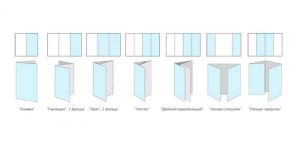
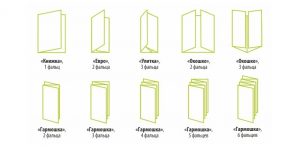
Форматы лифлетов
Кроме буклетов, в рекламе активно используются лифлеты. По сути, это не что иное, как евроверсия классического буклета. Лифлет обычно печатается на бумаге А4, имеет два и больше сгибов.
Конечный формат изделия определяется пожеланиями заказчика. Наиболее распространенные варианты: 100×210 мм, 98×210 мм, 90×210 мм.
[gogleblock]
Форматы листовок
Рекламные листовки тоже могут иметь разные размеры. Наиболее распространены 4 типа:
- А5 (148×210 мм)
- А6 (105×148 мм)
- А7 (74х105 мм)
- A4 (210х297 мм)
Формат А5 универсален. Площади листа вполне хватает для размещения информации о компании, рекламных акций, специальных предложений для клиентов и др. Листовки А4 используются для продвижения продуктов, требующих подробного разъяснения. Чаще всего мы видим их в банках, страховых компаниях, автосалонах и т. п.
Листовки форматов А7 и А6 практичны и при умелом исполнении отлично передают саму суть рекламы. Они дают возможность разместить емкое и точное предложение. Размер листа позволяет легко положить листовку в карман. Затраты на изготовление такой продукции заказчиков приятно удивляют.
Форматы визиток
Визитки – еще один вид полиграфической продукции, где размер листа имеет особое значение. В России чаще всего используется стандартный формат – 50х90 мм.
Однако визитки могут иметь и меньшие размеры. Так, например, в международной деловой среде принято использовать карточки 85,6х53,98 мм, согласно стандарту ISO 7810 ID-1.
Стандартными для стран ЕС считаются визитки 85х55 мм. Американский стандарт предусматривает использование карточек размером 88,9х50,8 мм. А в Японии все визитницы и органайзеры рассчитаны под бумагу или пластик 91х55 мм.
Таблица стандартных размеров полиграфии
| Вид продукции | Форматы и размеры (мм) |
| Бейджи | 85х55 |
| Бланки | А4 (210х297) |
| Блокноты | А4 (210х297), А5 (148х210), А6 (105х148), А7 (74х105) |
| Брошюры | А4 (210х297), А5 (148х210), А6 (105х148) |
| Буклеты | А4 (210х297), А5 (148х210), А6 (105х148) |
| Визитки | 50х90 |
| Журналы | А4 (210х297) |
| Календари карманные | 70х100 |
| Календари настенные листовые | А1 (594х841), А2 (420х594), А3 (297х420) |
| Конверты | С4 (229х324), С5 (162х229), С6 (114х162) |
| Каталоги | А4 (210х297), А5 (148х210) |
| Листовки | А4 (210х297), А5 (148х210), А6 (105х148), А7 (74х105) |
| Лифлеты | А4 (210х297) |
| Открытки | А6 (105х148) |
| Папки | 220х310 |
| Плакаты / постеры | А0 (841х1189), А1 (594х841), А2 (420х594), А3 (297х420) |
| Проспекты | А4 (210х297) |
| Приглашения | 100х150, 100х200, 150х210 |
| Таблички на дверь | 100х150, 200х300, 200х400 |
| Флаеры | 98х210 |
Paper size standards govern the size of sheets of paper used as writing paper, stationery, cards, and for some printed documents.
The ISO 216 standard, which includes the commonly used A4 size, is the international standard for paper size. It is used across the world except in North America and parts of Central and South America, where North American paper sizes such as «Letter» and «Legal» are used.[1] The international standard for envelopes is the C series of ISO 269.
International standard paper sizes [edit]
ISO A4 exclusively
ISO A4 primarily
US-Letter primarily
US-Letter predominantly
US-Letter exclusively
The international paper size standard is ISO 216. It is based on the German DIN 476 standard for paper sizes. Each ISO paper size is one half of the area of the next larger size in the same series. ISO paper sizes are all based on a single aspect ratio of the square root of 2, or approximately 1:1.41421. There are different series, as well as several extensions.
The following international paper sizes are included in Cascading Style Sheets (CSS): A3, A4, A5, B4, B5.[2]
A series[edit]
There are 11 sizes in the A series, designated A0–A10, all of which have an aspect ratio of 
Since A series sizes share the same aspect ratio 
The A0 base size is defined as having an area of 1 m2; given an aspect ratio of 
by
.
or, rounded to the nearest millimetre, 1,189 mm × 841 mm (46.8 in × 33.1 in).
A series sizes are related in that the smaller dimension of a given size is the larger dimension of the next smaller size, and folding an A series sheet in half in its larger dimension—that is, folding it in half parallel to its short edge—results in two halves that are each the size of the next smaller A series size. As such, a folded brochure of a given A-series size can be made by folding sheets of the next larger size in half, e.g. A4 sheets can be folded to make an A5 brochure. The fact that halving a sheet with an aspect ratio of 

where a is the long side and b is the short side. The aspect ratio for the new dimensions of the folded paper is:
The advantages of basing a paper size upon an aspect ratio of 
Briefly after the introduction of the metric system, a handful of new paper formats equivalent to modern ones were developed in France, having been proposed by the mathematician Lazare Carnot, and published for judicial purposes in 1798 during the French Revolution.[4] These were never widely adopted, however:
- grand registre (A2)
- moyen papier (A3)
- grand papier (B3)
- petit papier (B4)
- demi feuille(B5)
- effets de commerce (half-B5)
Early in the 20th century, the ratio was used to specify the world format starting with 1 cm as the short edge of the smallest size. Walter Porstmann started with the largest sizes instead, assigning one an area of 1 m2 (A0) and the other a short edge of 1 m (B0). He thereby turned the forgotten French sizes into a proper system of different paper sizes, while introducing systematic alphanumeric monikers for them. Generalized to nothing less than four series, this system was introduced as a DIN standard (DIN 476) in Germany in 1922, replacing a vast variety of other paper formats. Even today, the paper sizes are called «DIN A4» (IPA: [diːn.ʔaː.fiːɐ̯]) in everyday use in Germany and Austria.
The DIN 476 standard spread quickly to other countries. Before the outbreak of World War II, it had been adopted by the following countries in Europe:
- Belgium (1924)
- Netherlands (1925)
- Norway (1926)
- Finland (1927)
- Switzerland (1929)
- Sweden (1930) with later extensions
- Soviet Union (1934) with custom extensions
- Hungary (1938)
- Italy (1939)
During World War II, the standard spread to South America and was adopted by Uruguay (1942), Argentina (1943) and Brazil (1943), and afterwards spread to other countries:
- Australia (1974)
- Austria (1948)
- Bangladesh (1972)
- Barbados (1973)
- Chile (1968)
- Colombia (1975)
- Czechoslovakia (now Czechia and Slovakia) (1953)
- Denmark (1953)
- Ecuador (1974)
- France (1967)
- Greece (1970)
- Iceland (1964)
- India (1957) with custom extensions
- Iran (1948)
- Ireland (1959)
- Israel (1954)
- Japan (1951) with different B series
- Kuwait (1975)
- Mexico (1965)
- New Zealand (1963)
- Peru (1967)
- Poland (1957)
- Portugal (1954)
- Rhodesia (now Zimbabwe) (1970)
- Romania (1949)
- Singapore (1970)
- South Africa (1966)
- Spain (1947)
- Thailand (1973)
- Turkey (1967)
- United Kingdom (1971)[5]
- Venezuela (1962)
- Yugoslavia (now Croatia, Serbia, Slovenia, Bosnia and Herzegovina, Montenegro, and North Macedonia) (1956)
By 1975, so many countries were using the German system that it was established as an ISO standard, as well as the official United Nations document format. By 1977, A4 was the standard letter format in 88 of 148 countries. Today the standard has been adopted by all countries in the world except the United States and Canada. In Mexico, Costa Rica, Colombia, Venezuela, Chile, and the Philippines, the US letter format is still in common use, despite their official adoption of the ISO standard.
The weight of an A-series sheet of a given paper weight can be calculated by knowing the ratio of its size to the A0 sheet. For example, an A4 sheet is 1⁄16 the size of an A0 sheet, so if it is made from 80-g/m2 paper, it weighs 1⁄16 of 80 g, which is 5 g.
B series[edit]
The B series paper sizes are less common than the A series. They have the same aspect ratio of A series:
However, they have a different area. The area of B series sheets is in fact the geometric mean of successive A series sheets. B1 is between A0 and A1 in size, with an area of 


While less common in office use, the B series is used for a variety of special applications.
- B4, B5, and B6 are used for envelopes that fit C-series envelopes.
- B4 is quite common in printed music sheets.
- B5 is a relatively common choice for books.
- B7 is equal to the passport size ID-3 from ISO/IEC 7810.
- Many posters use B-series paper or a close approximation, such as 50 cm × 70 cm ~ B2.
The B-series is widely used in the printing industry to describe both paper sizes and printing press sizes, including digital presses. B3 paper is used to print two US letter or A4 pages side by side using imposition; four pages would be printed on B2, eight on B1, etc.[need quotation to verify]
C series[edit]
The C series is defined in ISO 269, which was withdrawn in 2009 without a replacement, but is still specified in several national standards. It is primarily used for envelopes. The area of C series sheets is the geometric mean of the areas of the A and B series sheets of the same number; for instance, the area of a C4 sheet is the geometric mean of the areas of an A4 sheet and a B4 sheet. This means that C4 is slightly larger than A4, and slightly smaller than B4. The practical usage of this is that a letter written on A4 paper fits inside a C4 envelope, and both A4 paper and C4 envelope fits inside a B4 envelope.
Some envelope formats with mixed sides from adjacent sizes (and thus an approximate aspect ratio of 2:1) are also defined in national adaptations of the ISO standard, e.g. DIN C6/C5 (also known as C65) is 114 mm × 229 mm where the common side to C5 and C6 is 162 mm. This format allows an envelope holding an A-sized paper folded in three, e.g. for the C65, an A4.
Overview of ISO paper sizes[edit]
| Format | A series[6] | B series[7] | C series[8] | ||||||
|---|---|---|---|---|---|---|---|---|---|
| Size | short × long | Notional area | short × long | Notional area | short × long | Notional area | |||
| mm | in | m2 | mm | in | m2 | mm | in | m2 | |
| 0 | 841 × 1189 | 33.1 × 46.8 | 20 = 1 | 1000 × 1414 | 39.4 × 55.7 | 21⁄2 ≈ 1.414 | 917 × 1297 | 36.1 × 51.1 | 21⁄4 ≈ 1.189 |
| 1 | 594 × 841 | 23.4 × 33.1 | 1/2 = 0.5 | 707 × 1000 | 27.8 × 39.4 | 2−1⁄2 ≈ 0.707 | 648 × 917 | 25.5 × 36.1 | 2−3⁄4 ≈ 0.595 |
| 2 | 420 × 594 | 16.5 × 23.4 | 1/22 = 0.25 | 500 × 707 | 19.7 × 27.8 | 2−1+1⁄2 ≈ 0.354 | 458 × 648 | 18.0 × 25.5 | 2−1+3⁄4 ≈ 0.297 |
| 3 | 297 × 420 | 11.7 × 16.5 | 1/23 = 0.125 | 353 × 500 | 13.9 × 19.7 | 2−2+1⁄2 ≈ 0.177 | 324 × 458 | 12.8 × 18.0 | 2−2+3⁄4 ≈ 0.149 |
| 4 | 210 × 297 | 8.3 × 11.7 | 1/24 = 0.0625 | 250 × 353 | 9.8 × 13.9 | 2−3+1⁄2 ≈ 0.088 | 229 × 324 | 9.0 × 12.8 | 2−3+3⁄4 ≈ 0.0743 |
| 5 | 148 × 210 | 5.8 × 8.3 | 1/25 ≈ 0.0313 | 176 × 250 | 6.9 × 9.8 | 2−4+1⁄2 ≈ 0.044 | 162 × 229 | 6.4 × 9.0 | 2−4+3⁄4 ≈ 0.0372 |
| 6 | 105 × 148 | 4.1 × 5.8 | 1/26 ≈ 0.0156 | 125 × 176 | 4.9 × 6.9 | 2−5+1⁄2 ≈ 0.0221 | 114 × 162 | 4.5 × 6.4 | 2−5+3⁄4 ≈ 0.0186 |
| 7 | 74 × 105 | 2.9 × 4.1 | 1/27 ≈ 0.0078 | 88 × 125 | 3.5 × 4.9 | 2−6+1⁄2 ≈ 0.0110 | 81 × 114 | 3.2 × 4.5 | 2−6+3⁄4 ≈ 0.0093 |
| 8 | 52 × 74 | 2.0 × 2.9 | 1/28 ≈ 0.0039 | 62 × 88 | 2.4 × 3.5 | 2−7+1⁄2 ≈ 0.0055 | 57 × 81 | 2.2 × 3.2 | 2−7+3⁄4 ≈ 0.0046 |
| 9 | 37 × 52 | 1.5 × 2.0 | 1/29 ≈ 0.0020 | 44 × 62 | 1.7 × 2.4 | 2−8+1⁄2 ≈ 0.0028 | 40 × 57 | 1.6 × 2.2 | 2−8+3⁄4 ≈ 0.0023 |
| 10 | 26 × 37 | 1.0 × 1.5 | 1/210 ≈ 0.00098 | 31 × 44 | 1.2 × 1.7 | 2−9+1⁄2 ≈ 0.0014 | 28 × 40 | 1.1 × 1.6 | 2−9+3⁄4 ≈ 0.0012 |
| i |  where where ![{\displaystyle \alpha _{A}={\sqrt[{4}]{2}}\,{\text{m}};r={\tfrac {1}{\sqrt {2}}}}](https://wikimedia.org/api/rest_v1/media/math/render/svg/41cbb32e4305ffacd7c5f2198dcb973dc54a0630)
|
 where where 
|
 where where ![{\displaystyle \alpha _{C}={\sqrt[{8}]{8}}\,{\text{m}};r={\tfrac {1}{\sqrt {2}}}}](https://wikimedia.org/api/rest_v1/media/math/render/svg/32b4f5b6fe055412c7b2e83414f1d90cdb4d58ac)
|
The 
The tolerances specified in the standard are
- ±1.5 mm (0.06 in) for dimensions up to 150 mm (5.9 in),
- ±2 mm (0.08 in) for lengths in the range 150 to 600 mm (5.9 to 23.6 in) and
- ±3 mm (0.12 in) for any dimension above 600 mm (23.6 in).
[edit]
German original[edit]
The German standard DIN 476 was published on 18 August 1922 and is the original specification of the A, B and C sizes. In 1991, it was split into DIN 476-1 for the A and B formats and 476-2 for the C series. The former has been withdrawn in 2002 in favor of adopting the international standard as DIN EN ISO 216, but part 2 has been retained and was last updated in 2008.
The first and the second editions of DIN 476 from 1922 and 1925 also included a D series.
| Format | D series | |
|---|---|---|
| Size | mm × mm | inch × inch |
| 0 | 771 × 1090 | 30+3⁄8 × 42+11⁄12 |
| 1 | 545 × 771 | 21+11⁄24 × 30+3⁄8 |
| 2 | 385 × 545 | 15+1⁄6 × 21+11⁄24 |
| 3 | 272 × 385 | 10+17⁄24 × 15+1⁄6 |
| 4 | 192 × 272 | 7+13⁄24 × 10+17⁄24 |
| 5 | 136 × 192 | 5+3⁄8 × 7+13⁄24 |
| 6 | 96 × 136 | 3+19⁄24 × 5+3⁄8 |
| 7 | 68 × 96 | 2+2⁄3 × 3+19⁄24 |
| 8 | 48 × 68 | 1+7⁄8 × 2+2⁄3 |
The smallest formats specified originally were A13 and B13, which were reduced to x10[clarification needed] in the 1930 edition, as well as C8 and D8; C9 and C10 have been added in the 1976 revision for compatibility with photography sizes: C8 closely matches 6×9 photos, and C9 and C10 closely match 7×7 and 5×5 slides, respectively.
| Format | A | B | ||
|---|---|---|---|---|
| Size | mm × mm | inch × inch | mm × mm | inch × inch |
| 11 | 18 × 26 | 17⁄24 × 1+1⁄24 | 22 × 31 | 7⁄8 × 1+5⁄24 |
| 12 | 13 × 18 | 1⁄2 × 17⁄24 | 15 × 22 | 7⁄12 × 7⁄8 |
| 13 | 9 × 13 | 3⁄8 × 1⁄2 | 11 × 15 | 5⁄12 × 7⁄12 |
DIN 476 provides for formats larger than A0, denoted by a prefix factor. In particular, it lists the formats 2A0 and 4A0, which are twice and four times the size of A0 respectively.
However, ISO 216:2007 notes 2A0 and 4A0 in the table of Main series of trimmed sizes (ISO A series) as well: «The rarely used sizes [2A0 and 4A0] which follow also belong to this series.»
| Name | mm × mm | inch × inch |
|---|---|---|
| 4A0 | 1682 × 2378 | 66+5⁄24 × 93+5⁄8 |
| 2A0 | 1189 × 1682 | 46+19⁄24 × 66+5⁄24 |
DIN 476 also used to specify slightly tighter tolerances than ISO 216:
- ±1 mm (0.04 in) for dimensions up to 150 mm (5.9 in),
- ±1.5 mm (0.06 in) for lengths in the range 150 mm to 600 mm (5.9 to 23.6 in) and
- ±2 mm (0.08 in) for any dimension above 600 mm (23.6 in).
There used to be a standard, DIN 198, that was just a table of recommended A series formats for a number of business applications. The 1976 edition of this standard introduced a size 2⁄3 A4 198 mm × 210 mm and suggested it for some forms and slips.
Swedish extensions[edit]
The Swedish standard SIS 01 47 11[9] generalized the ISO system of A, B, and C formats by adding D, E, F, and G formats to it. Its D format sits between a B format and the next larger A format (just like C sits between A and the next larger B). The remaining formats fit in between all these formats, such that the sequence of formats A4, E4, C4, F4, B4, G4, D4, *H4, A3 is a geometric progression, in which the dimensions grow by a factor ![{\displaystyle {\sqrt[{16}]{2}}}](https://wikimedia.org/api/rest_v1/media/math/render/svg/a7dbfd1210c3fbd906c1316b2338b2246caf489e)
Of these additional formats, G5 (169 × 239 mm) and E5 (155 × 220 mm) are popular in Sweden and the Netherlands for printing dissertations,[10] but the other formats have not turned out to be particularly useful in practice. They have not been adopted internationally and the Swedish standard has been withdrawn.
The Swedish and German D series basically contain the same sizes but are offset by one, i.e. DIN D4 equals SIS D5 and so on.
| Designation | Shorter edge | Longer edge |
|---|---|---|
| An | r−4 × sn | r+4 × sn |
| En | r−3 × sn | r+5 × sn |
| Cn | r−2 × sn | r+6 × sn |
| Fn | r−1 × sn | r+7 × sn |
| Bn | r 0 × sn | r+8 × sn |
| Gn | r+1 × sn | r+9 × sn |
| Dn | r+2 × sn | r+10 × sn |
| *Hn | r+3 × sn | r+11 × sn |
| A(n-1) | r+4 × sn | r+12 × sn |
| n | E | F | G | D |
|---|---|---|---|---|
| 0 | 878 × 1242 | 958 × 1354 | 1044 × 1477 | 1091 × 1542 |
| 1 | 621 × 878 | 677 × 958 | 738 × 1044 | 771 × 1091 |
| 2 | 439 × 621 | 479 × 677 | 522 × 738 | 545 × 771 |
| 3 | 310 × 439 | 339 × 479 | 369 × 522 | 386 × 545 |
| 4 | 220 × 310 | 239 × 339 | 261 × 369 | 273 × 386 |
| 5 | 155 × 220 | 169 × 239 | 185 × 261 | 193 × 273 |
| 6 | 110 × 155 | 120 × 169 | 131 × 185 | 136 × 193 |
| 7 | 78 × 110 | 85 × 120 | 92 × 131 | 96 × 136 |
| 8 | 55 × 78 | 60 × 85 | 65 × 92 | 68 × 96 |
| 9 | 39 × 55 | 42 × 60 | 46 × 65 | 48 × 68 |
| 10 | 27 × 39 | 30 × 42 | 33 × 46 | 34 × 48 |
Japanese variation[edit]
The Japanese standard JIS P 0138 defines two main series of paper sizes. The JIS A-series is identical to the ISO A-series except that is has slightly different tolerances. The area of B-series paper is 1.5 times that of the corresponding A-paper (instead of the factor 
Cascading Style Sheets (CSS) only supports the most popular sizes, JIS-B4 and JIS-B5.[2]
| Size | mm × mm | inch × inch |
|---|---|---|
| 0 | 1030 × 1456 | 40+13⁄24 × 57+1⁄3 |
| 1 | 728 × 1030 | 28+2⁄3 × 40+13⁄24 |
| 2 | 515 × 728 | 20+7⁄24 × 28+2⁄3 |
| 3 | 364 × 515 | 14+1⁄3 × 20+7⁄24 |
| 4 | 257 × 364 | 10+1⁄8 × 14+1⁄3 |
| 5 | 182 × 257 | 7+1⁄6 × 10+1⁄8 |
| 6 | 128 × 182 | 5+1⁄24 × 7+1⁄6 |
| 7 | 91 × 128 | 3+7⁄12 × 5+1⁄24 |
| 8 | 64 × 91 | 2+1⁄2 × 3+7⁄12 |
| 9 | 45 × 64 | 1+19⁄24 × 2+1⁄2 |
| 10 | 32 × 45 | 1+1⁄4 × 1+19⁄24 |
| 11 | 22 × 32 | 7⁄8 × 1+1⁄4 |
| 12 | 16 × 22 | 5⁄8 × 7⁄8 |
| Size | mm × mm | inch × inch | AR | sun × sun |
|---|---|---|---|---|
| A | 625 × 880 | 24+5⁄8 × 34+5⁄8 | √2∶1 | 20.6 × 29 |
| B | 765 × 1085 | 30+1⁄8 × 42+17⁄24 | √2∶1 | 25.25 × 35.8 |
| Shiroku-ban (4-6) | 788 × 1091 | 31+1⁄24 × 42+23⁄24 | 1.38 | 26 × 36 |
| Kiku-ban (Chrysanthemum) | 636 × 939 | 25+1⁄24 × 36+23⁄24 | 1.48 | 21 × 31 |
| Hattron | 900 × 1200 | 35+5⁄12 × 47+1⁄4 | 4∶3 | 29.7 × 39.6 |
A popular size for books, dubbed AB, combines the shorter edges of A4 and B4. Another two with an aspect ratio approximating 16:9 are 20% narrower variants of A6 and B6, respectively, the latter resulting from cutting JIS B1 into 4 × 10 sheets (thus «B40»).
There are also a number of traditional paper sizes, which are now used mostly by printers. The most common of these old series is the Shiroku-ban and the Kiku paper sizes.
| Size | mm × mm | inch × inch | AR | sun × sun | Notes |
|---|---|---|---|---|---|
| AB | 210 × 257 | 8+1⁄4 × 10+1⁄8 | 11∶9 | 6.93 × 8.48 | A4/A5 × JIS B4/B5 |
| B40 | 103 × 182 | 4+1⁄24 × 7+1⁄6 | 16∶9 | 3.4 × 6 | JIS B1 height⁄10 × width⁄4 |
| 35 | 84 × 148 | 3+7⁄24 × 5+5⁄6 | 1.76 | 2.77 × 4.88 | trimmed 3 × 5 |
| Kiku-ban | 227 × 304 | 8+11⁄12 × 11+23⁄24 | 1.34 | 7.5 × 10 | |
| 218 × 304 | 8+7⁄12 × 11+23⁄24 | 1.39 | 7.2 × 10 | ||
| 152 × 227 | 6 × 8+11⁄12 | 1.49 | 5 × 7.5 | ||
| 152 × 218 | 6 × 8+7⁄12 | 10∶7 | 5 × 7.2 |
Chinese extensions[edit]
The Chinese standard GB/T 148–1997,[12] which replaced GB 148–1989, documents the standard ISO series, A and B, but adds a custom D series. This Chinese format originates from the Republic of China (1912–1949). The D series is not identical to the German or Swedish D series. It does not strictly follow the same principles as ISO paper sizes: The aspect ratio is only very roughly 
| Format | D series | AR | Alias | Untrimmed sizes | ||
|---|---|---|---|---|---|---|
| Size | mm × mm | inch × inch | mm × mm | inch × inch | ||
| 0 | 764 × 1064 | 30+1⁄12 × 41+7⁄8 | 1.3927 | 1K | 780 × 1080 | 30+17⁄24 × 42+1⁄2 |
| 1 | 532 × 760 | 20+23⁄24 × 29+11⁄12 | 1.4286 | 2K | 540 × 780 | 21+1⁄4 × 30+17⁄24 |
| 2 | 380 × 528 | 14+23⁄24 × 20+19⁄24 | 1.3895 | 4K | 390 × 540 | 15+3⁄8 × 21+1⁄4 |
| 3 | 264 × 376 | 10+3⁄8 × 14+19⁄24 | 1.4242 | 8K | 270 × 390 | 10+5⁄8 × 15+3⁄8 |
| 4 | 188 × 260 | 7+5⁄12 × 10+1⁄4 | 1.3830 | 16K | 195 × 270 | 7+2⁄3 × 10+5⁄8 |
| 5 | 130 × 184 | 5+1⁄8 × 7+1⁄4 | 1.4154 | 32K | 135 × 195 | 5+1⁄3 × 7+2⁄3 |
| 6 | 92 × 126 | 3+5⁄8 × 4+23⁄24 | 1.3696 | 64K | 97 × 135 | 3+5⁄6 × 5+1⁄3 |
Indian variants[edit]
The Bureau of Indian Standards recommends the «ISO-A series» size of drawing sheet for engineering drawing works. The Bureau of Indian Standards specifies all the recommendations for engineering drawing sheets in its bulletin IS 10711: 2001.[13]
The Bureau extended the ISO-A series with a Special Elongated Sizes (Second Choice). These sizes are achieved by increasing the shorter dimensions of a sheet of the ISO A series to lengths that are multiples of the shorter dimensions of the chosen basic sheet.
| Size | mm × mm | in × in | AR |
|---|---|---|---|
| A3 x 3 | 420 × 891 | 16+13⁄24 × 35+1⁄12 | 3∶√2 |
| A3 x 4 | 420 × 1189 | 16+13⁄24 × 46+19⁄24 | 4∶√2 |
| A4 x 3 | 297 × 630 | 11+17⁄24 × 24+19⁄24 | 3∶√2 |
| A4 x 4 | 297 × 841 | 11+17⁄24 × 33+1⁄8 | 4∶√2 |
| A4 x 5 | 297 × 1051 | 11+17⁄24 × 41+3⁄8 | 5∶√2 |
There is also a Exceptional Elongated Sizes (Third Choice). These sizes are obtained by increasing the shorter dimensions of a sheet of the ISO-A series to lengths that are multiples of the shorter dimensions of the chosen basic sheet. These sizes are used when a very large or extra elongated sheet is needed.
| Size | mm × mm | in × in | AR |
|---|---|---|---|
| A0 x 2 | 1189 × 1682 | 46+19⁄24 × 66+5⁄24 | √2∶1 |
| A0 x 3 | 1189 × 2523 | 46+19⁄24 × 99+1⁄3 | 3∶√2 |
| A1 x 3 | 841 × 1783 | 33+1⁄8 × 70+5⁄24 | 3∶√2 |
| A1 x 4 | 841 × 2378 | 33+1⁄8 × 93+5⁄8 | 4∶√2 |
| A2 x 3 | 594 × 1261 | 23+3⁄8 × 49+5⁄8 | 3∶√2 |
| A2 x 4 | 594 × 1682 | 23+3⁄8 × 66+5⁄24 | 4∶√2 |
| A2 x 5 | 594 × 2102 | 23+3⁄8 × 82+3⁄4 | 5∶√2 |
| A3 x 5 | 420 × 1486 | 16+13⁄24 × 58+1⁄2 | 5∶√2 |
| A3 x 6 | 420 × 1783 | 16+13⁄24 × 70+5⁄24 | 6∶√2 |
| A3 x 7 | 420 × 2080 | 16+13⁄24 × 81+7⁄8 | 7∶√2 |
| A4 x 6 | 297 × 1261 | 11+17⁄24 × 49+5⁄8 | 6∶√2 |
| A4 x 7 | 297 × 1471 | 11+17⁄24 × 57+11⁄12 | 7∶√2 |
| A4 x 8 | 297 × 1682 | 11+17⁄24 × 66+5⁄24 | 8∶√2 |
| A4 x 9 | 297 × 1892 | 11+17⁄24 × 74+1⁄2 | 9∶√2 |
Soviet variants[edit]
The first standard of paper size in the Soviet Union was OST 303 in 1926. Six years later, it was replaced by OST 5115 which generally followed DIN 476 principles, but used Cyrillic lowercase letters instead of Latin uppercase, had the second row shifted so that б0 (B0) roughly corresponded to B1 and, more importantly, had slightly different sizes:[14]
| Format | а (A) | б (B) | в (V, C) | |||
|---|---|---|---|---|---|---|
| Size | mm × mm | inch × inch | mm × mm | inch × inch | mm × mm | inch × inch |
| 0 | 814 × 1152 | 32+1⁄24 × 45+3⁄8 | 747 × 1056 | 29+5⁄12 × 41+7⁄12 | ||
| 1 | 576 × 814 | 22+2⁄3 × 32+1⁄24 | 528 × 747 | 20+19⁄24 × 29+5⁄12 | 628 × 888 | 24+17⁄24 × 34+23⁄24 |
| 2 | 407 × 576 | 16+1⁄24 × 22+2⁄3 | 373 × 528 | 14+2⁄3 × 20+19⁄24 | 444 × 628 | 17+1⁄2 × 24+17⁄24 |
| 3 | 288 × 407 | 11+1⁄3 × 16+1⁄24 | 264 × 373 | 10+3⁄8 × 14+2⁄3 | 314 × 444 | 12+3⁄8 × 17+1⁄2 |
| 4 | 203 × 288 | 8 × 11+1⁄3 | 186 × 264 | 7+1⁄3 × 10+3⁄8 | 222 × 314 | 8+3⁄4 × 12+3⁄8 |
| 5 | 144 × 203 | 5+2⁄3 × 8 | 132 × 186 | 5+5⁄24 × 7+1⁄3 | 157 × 222 | 6+1⁄6 × 8+3⁄4 |
| 6 | 101 × 144 | 3+23⁄24 × 5+2⁄3 | 93 × 132 | 3+2⁄3 × 5+5⁄24 | 111 × 157 | 4+3⁄8 × 6+1⁄6 |
| 7 | 72 × 101 | 2+5⁄6 × 3+23⁄24 | 66 × 93 | 2+7⁄12 × 3+2⁄3 | 78 × 111 | 3+1⁄12 × 4+3⁄8 |
| 8 | 50 × 72 | 1+23⁄24 × 2+5⁄6 | 46 × 66 | 1+19⁄24 × 2+7⁄12 | 55 × 78 | 2+1⁄6 × 3+1⁄12 |
| 9 | 36 × 50 | 1+5⁄12 × 1+23⁄24 | 33 × 46 | 1+7⁄24 × 1+19⁄24 | 39 × 55 | 1+13⁄24 × 2+1⁄6 |
| 10 | 25 × 36 | 1 × 1+5⁄12 | 23 × 33 | 11⁄12 × 1+7⁄24 | ||
| 11 | 18 × 25 | 17⁄24 × 1 | 16 × 23 | 5⁄8 × 11⁄12 | ||
| 12 | 12 × 18 | 11⁄24 × 17⁄24 | 11 × 16 | 5⁄12 × 5⁄8 | ||
| 13 | 9 × 12 | 3⁄8 × 11⁄24 |
The general adaptation of ISO 216 in the Soviet Union, which replaced OST 5115, was GOST 9327. In its 1960 version, it lists formats down to A13, B12 and C8 and also specifies 1⁄2, 1⁄4 and 1⁄8 prefixes for halving the shorter side (repeatedly) for stripe formats, e.g. 1⁄2A4 = 105 mm × 297 mm.
A standard for technical drawings from 1960, GOST 3450,[15] introduces alternative numeric format designations to deal with very high or very wide sheets.
These 2-digit codes are based upon A4 = «11»: The first digit is the factor the longer side (297 mm) is multiplied by and the second digit is the one for the shorter side (210 mm), so «24» is 2×297 mm × 4×210 mm = 594 mm × 840 mm.
| n | (×1) | ×2 | ×3 | ×4 | ×5 | ×6 |
|---|---|---|---|---|---|---|
| 5 | = A0 | = 2A0 | 2523 × 1189 | 3364 × 1189 | 4204 × 1189 | 5045 × 1189 |
| 4 | = A1 | = A0 | 1784 × 841 | 2378 × 841 | 2973 × 841 | 3568 × 841 |
| 3 | = A2 | = A1 | 1261 × 595 | 1682 × 595 | 2102 × 595 | 2523 × 595 |
| 2 | = A3 | = A2 | 892 × 420 | 1189 × 420 | 1487 × 420 | 1784 × 420 |
| 1 | = A4 | = A3 | 631 × 297 | 841 × 297 | 1051 × 297 | 1261 × 297 |
| 0 | = A5 | = A4 | 446 × 210 | 595 × 210 | 743 × 210 | 892 × 210 |
GOST 3450 from 1960 was replaced by ESKD GOST 2301 in 1968,[16] but the numeric designations remained in popular use much longer.
The new designations were not purely numeric but consisted of the ISO label followed by an ‘x’, or possibly the multiplication sign ‘×’, and the factor, e.g. DIN 2A0 = GOST A0×2, but DIN 4A0 ≠ GOST A0×4, also listed are: A0×3, A1×3, A1×4, A2×3–A2×5, A3×3–A3×7, A4×3–A4×9. The formats …×1 and …×2 usually would be aliases for existing formats.
Elongated sizes[edit]
ISO 5457, last updated in 1999,[17] introduces elongated sizes that are formed by a combination of the dimensions of the short side of an A-size (e.g. A2) with the dimensions of the long side of another larger A-size (e.g. A0). The result is a new size, for example with the abbreviation A2.0 we would have a 420 × 1189 mm size.
| Size | Short edge | Long edge | mm × mm | in × in | AR |
|---|---|---|---|---|---|
| A1.0 | A1/A2 | A0 | 594 × 1189 | 23+3⁄8 × 46+19⁄24 | 2∶1 |
| A2.0 | A2/A3 | A0 | 420 × 1189 | 16+13⁄24 × 46+19⁄24 | 4∶√2 |
| A2.1 | A1/A0 | 420 × 841 | 16+13⁄24 × 33+1⁄8 | 2∶1 | |
| A3.0 | A3/A4 | A0 | 297 × 1189 | 11+17⁄24 × 46+19⁄24 | 4∶1 |
| A3.1 | A1/A0 | 297 × 841 | 11+17⁄24 × 33+1⁄8 | 4∶√2 | |
| A3.2 | A2/A1 | 297 × 594 | 11+17⁄24 × 23+3⁄8 | 2∶1 |
These drawing paper sizes have been adopted by ANSI/ASME Y14.1M for use in the United States, alongside A0 through A4 and alongside inch-based sizes.
International envelope and insert sizes[edit]
| Name | mm × mm | inch × inch | AR | Notes |
|---|---|---|---|---|
| 1⁄3A4 | 99 × 210 | 3+11⁄12 × 8+1⁄4 | 3∶√2 | common flyer or stripe size |
| unnamed | 105 × 210 | 4+1⁄8 × 8+1⁄4 | 2∶1 | standard folded size of German letters |
DIN 5008 (previously DIN 676) prescribes, among many other things, two variants, A and B, for the location of the address field on the first page of a business letter and how to fold the A4 sheet accordingly, so the only part visible of the main content is the subject line.
| Name | mm × mm | inch × inch | AR | Content | Notes |
|---|---|---|---|---|---|
| DL | 110 × 220 | 4+1⁄3 × 8+2⁄3 | 2∶1 | 1⁄3A4, DIN 5008 A and B | designated long, «DIN lang» (DIN long); sometimes erroneously called «DLE», apparently for envelope, instead; exactly matches Swedish SIS E6/E5 (E6: 110 mm × 155 mm, E5: 155 mm × 220 mm); envelope #5 in China, Chou/N 6 in Japan |
| C6/C5 | 114 × 229 | 4+1⁄2 × 9 | 2∶1 | common edge of C6 and C5 is 161 mm;
also known as «Postfix», «DL+» or «DL Max», but those terms are not standardized |
|
| Italian | 110 × 230 | 4+1⁄3 × 9+1⁄24 | 2.10∶1 | centimeter-rounded C6/C5 or slightly wider DL | |
| C7/C6 | 81 × 162 | 3+5⁄24 × 6+3⁄8 | 2∶1 | 1⁄3A5 | common edge of C7 and C6 is 114 mm |
| B6/C4 | 125 × 324 | 4+11⁄12 × 12+3⁄4 | 2.6 | B6 is 125 mm × 176 mm, C4 is 229 mm × 324 mm | |
| Invite | 220 × 220 | 8+2⁄3 × 8+2⁄3 | 1∶1 | square card with edge of A4 and A5, 210 mm | |
| DIN E4 | 280 × 400 | 11+1⁄24 × 15+3⁄4 | 10∶7 | listed in DIN 476–2, but not part of a series proper; SIS E4 is 220 mm × 310 mm |
International raw sizes[edit]
| raw | mm × mm | inch × inch | special raw | mm × mm | inch × inch | untrimmed | mm × mm | inch × inch | trimmed | mm × mm | inch × inch | mm × mm | inch × inch |
|---|---|---|---|---|---|---|---|---|---|---|---|---|---|
| RA0 | 860 × 1220 | 33+3⁄4 × 48 | SRA0 | 900 × 1280 | 35+1⁄2 × 50+1⁄2 | A0U | 880 × 1230 | 34+3⁄4 × 48+1⁄2 | A0T | 841 × 1189 | 33 × 46+3⁄4 | 821 × 1159 | 32+1⁄4 × 45+3⁄4 |
| RA1 | 610 × 860 | 24 × 33+3⁄4 | SRA1 | 640 × 900 | 25+1⁄4 × 35+1⁄2 | A1U | 625 × 880 | 24+1⁄2 × 34+3⁄4 | A1T | 594 × 841 | 23+1⁄2 × 33 | 574 × 811 | 22+1⁄2 × 32 |
| RA2 | 430 × 610 | 17 × 24 | SRA2 | 450 × 640 | 17+3⁄4 × 25+1⁄4 | A2U | 450 × 625 | 17+3⁄4 × 24+1⁄2 | A2T | 420 × 594 | 16+1⁄2 × 23+1⁄2 | 400 × 564 | 15+3⁄4 × 22+1⁄4 |
| RA3 | 305 × 430 | 12 × 17 | SRA3 | 320 × 450 | 12+1⁄2 × 17+3⁄4 | A3U | 330 × 450 | 13 × 17+3⁄4 | A3T | 297 × 420 | 11+3⁄4 × 16+1⁄2 | 277 × 390 | 11 × 15+1⁄4 |
| RA4 | 215 × 305 | 8+1⁄2 × 12 | SRA4 | 225 × 320 | 8+3⁄4 × 12+1⁄2 | A4U | 240 × 330 | 9+1⁄2 × 13 | A4T | 210 × 297 | 8+1⁄4 × 11+3⁄4 | 180 × 277 | 7 × 11 |
ISO 5457 specifies drawing paper sizes with a trimmed size equal to the A series sizes from A4 upward. The untrimmed sizes are 3 to 4 cm larger and rounded to the nearest centimeter. A0 through A3 are used in landscape orientation, while A4 is used in portrait orientation. Designations for preprinted drawing paper include the base sizes and a suffix, either T for trimmed or U for untrimmed sheets.
The withdrawn standard ISO 2784 did specify sizes of continuous, fan-fold forms based upon whole inches as was common for paper in continuous lengths in automatic data processing (ADP) equipment. Specifically, 12 inches (304.8 mm) were considered an untrimmed variant of the A4 height of 297 mm.
| Size | Acceptable equivalent | Direct equivalent | Exact size | Gross size | |||||
|---|---|---|---|---|---|---|---|---|---|
| inch × inch | mm × mm | AR | inch × inch | mm × mm | AR | mm × mm | mm × mm | inch × inch | |
| A4 | 8 × 12 | 203.2 × 304.8 | 3∶2 | 8+1⁄3 × 11+2⁄3 | 211.7 × 296.3 | 7∶5 | 210 × 297 | 250 × 340 | 9+4⁄5 × 13+2⁄5 |
| A5 | 6 × 8 | 152.4 × 203.2 | 4∶3 | 5+5⁄6 × 8+1⁄3 | 148.2 × 211.7 | 10∶7 | 148 × 210 | 180 × 250 | 7+1⁄10 × 9+4⁄5 |
| A6 | 4 × 6 | 101.6 × 152.4 | 3∶2 | 4+1⁄6 × 5+5⁄6 | 105.8 × 148.2 | 7∶5 | 105 × 148 | — | — |
| A7 | 3 × 4 | 76.20 × 101.6 | 4∶3 | — | — | — | 74 × 105 | — | — |
Transitional paper sizes[edit]
PA4 or L4[edit]
| Name | mm × mm | inch × inch | AR |
|---|---|---|---|
| PA0 | 840 × 1120 | 33+1⁄8 × 44+1⁄8 | 4∶3 |
| PA1 | 560 × 840 | 22 × 33+1⁄8 | 3∶2 |
| PA2 | 420 × 560 | 16+1⁄2 × 22 | 4∶3 |
| PA3 | 280 × 420 | 11 × 16+1⁄2 | 3∶2 |
| PA4 | 210 × 280 | 8+1⁄4 × 11 | 4∶3 |
| PA5 | 140 × 210 | 5+1⁄2 × 8+1⁄4 | 3∶2 |
| PA6 | 105 × 140 | 4+1⁄8 × 5+1⁄2 | 4∶3 |
| PA7 | 70 × 105 | 2+3⁄4 × 4+1⁄8 | 3∶2 |
| PA8 | 52 × 70 | 2 × 2+3⁄4 | 1.35 |
| PA9 | 35 × 52 | 1+3⁄8 × 2 | 1.49 |
| PA10 | 26 × 35 | 1 × 1+3⁄8 | 1.35 |
A transitional size called PA4 (210 mm × 280 mm or 8.27 in × 11.02 in), sometimes dubbed L4, was proposed for inclusion into the ISO 216 standard in 1975. It has the height of Canadian P4 paper (215 mm × 280 mm, about 8+1⁄2 in × 11 in) and the width of international A4 paper (210 mm × 297 mm or 8.27 in × 11.69 in), i.e. it uses the smaller value among the two for each side. The table shows how this format can be generalized into an entire format series.
The PA formats did not end up in ISO 216, because the committee decided that the set of standardized paper formats should be kept to the minimum necessary.[citation needed] However, PA4 remains of practical use today. In landscape orientation, it has the same 4:3 aspect ratio as the displays of traditional TV sets, some computer displays (e.g. the iPad) and data projectors. PA4, with appropriate margins is, therefore, a good choice as the format of presentation slides.
As a compromise between the two most popular paper sizes globally, PA4 is used today by many international magazines, because it can be printed easily on equipment designed for either A4 or US Letter. That means it is not as much a paper size as a page format. Apple, for instance, requires this format for digital music album booklets.[18]
The size 210 mm × 280 mm was documented in the Canadian standard CAN2-200.2-M79 «Common Image Area for Paper Sizes P4 and A4».[19]
F4[edit]
| Name | mm × mm | inch × inch | AR |
|---|---|---|---|
| F0 | 841 × 1321 | 33+1⁄8 × 52 | 1.57 |
| F1 | 660 × 841 | 26 × 33+1⁄8 | 1.27 |
| F2 | 420 × 660 | 16+1⁄2 × 26 | 1.57 |
| F3 | 330 × 420 | 13 × 16+1⁄2 | 1.27 |
| F4 | 210 × 330 | 8+1⁄4 × 13 | 1.57 |
| F5 | 165 × 210 | 6+1⁄2 × 8+1⁄4 | 1.27 |
| F6 | 105 × 165 | 4+1⁄8 × 6+1⁄2 | 1.57 |
| F7 | 82 × 105 | 3+1⁄4 × 4+1⁄8 | 32∶25 |
| F8 | 52 × 82 | 2 × 3+1⁄4 | 1.58 |
| F9 | 41 × 52 | 1+5⁄8 × 2 | 1.27 |
| F10 | 26 × 41 | 1 × 1+5⁄8 | 1.58 |
A non-standard F4 paper size is common in Southeast Asia. It is a transitional size with the shorter side of ISO A4 (210 mm, 8+1⁄4 inch) and the longer side of British Foolscap (13-inch, 330 mm). ISO A4 is exactly 90% the height of F4.
This size is sometimes also known as (metric) ‘foolscap’ or ‘folio’.
In some countries, the narrow side of F4 is slightly broader: 8.5 inches (216 mm) or 215 mm. It is then equivalent to the US Government Legal and Foolscap Folio sizes.
In Indonesia, where it is the legally-mandated paper size for use in the printing of national legislation, it is sometimes called Folio or HVS (from Dutch: houtvrij schrijfpapier, «wood-free writing paper»), while in Philippines it is sometimes also called long bond.
A sheet of F4 can be cut from a sheet of SRA4 with very little wastage. The size is also smaller than its Swedish equivalent SIS F4 at 239 mm × 338 mm.
Weltformat[edit]
The Weltformat (world format) was developed by German chemist Wilhelm Ostwald in 1911 as part of Die Brücke, around the same time DIN 476 was first discussed. It shares the same design primitives, especially the aspect ratio, but is based upon 1 cm as the short edge of the smallest size. Sizes were designated by roman numerals.
The result, for the fourth through fourteenth size, is close to the DIN/ISO C series.
[20]
[21]
| Weltformat | mm × mm | inch × inch | DIN |
|---|---|---|---|
| I | 10 × 14 | 3⁄8 × 1⁄2 | |
| II | 14 × 20 | 1⁄2 × 3⁄4 | |
| III | 20 × 28 | 3⁄4 × 1+1⁄8 | |
| IV | 28 × 40 | 1+1⁄8 × 1+5⁄8 | C10 |
| V | 40 × 57 | 1+5⁄8 × 2+1⁄4 | C9 |
| VI | 57 × 80 | 2+1⁄4 × 3+1⁄8 | C8 |
| VII | 80 × 113 | 3+1⁄8 × 4+1⁄2 | C7 |
| VIII | 113 × 160 | 4+1⁄2 × 6+1⁄4 | C6 |
| IX | 160 × 226 | 6+1⁄4 × 8+7⁄8 | C5 |
| X | 226 × 320 | 8+7⁄8 × 12+5⁄8 | C4 |
| XI | 320 × 453 | 12+5⁄8 × 17+7⁄8 | C3 |
| XII | 453 × 640 | 17+7⁄8 × 25+1⁄4 | C2 |
| XIII | 640 × 905 | 25+1⁄4 × 35+5⁄8 | C1 |
| XIV | 905 × 1280 | 35+5⁄8 × 50+3⁄8 | C0 |
| XV | 1280 × 1810 | 50+3⁄8 × 71+1⁄4 | |
| XVI | 1810 × 2560 | 71+1⁄4 × 100+3⁄4 |
The sizes have been used for some print products in the early 20th century in central Europe but got replaced by DIN sizes almost entirely. However, it was successfully adopted from 1913 onwards for posters and placards in Switzerland. Even today, the default size for posters in Swiss advertisements, F4, is colloquially known as Weltformat, although it measures 895 mm × 1280 mm, i.e. 1 cm less than size XIV. [22] This poster size goes alongside F12 «Breitformat» 2685 mm × 1280 mm (3 × F4) and F24 «Großformat» 2685 mm × 2560 mm (2 × 3 × F4, ) as well as F200 «Cityformat» 1165 mm × 1700 mm.
A0a[edit]
Although the movement is towards the international standard metric paper sizes, on the way there from the traditional ones there has been at least one new size just a little larger than that used internationally.
British architects and industrial designers once used a size called «Antiquarian», 31 in × 53 in (787 mm × 1,346 mm), as listed above, but given in the New Metric Handbook (Tutt & Adler 1981) as 813 mm × 1,372 mm (32 in × 54 in) for board size. This is a little larger than ISO A0, 841 mm × 1189 mm. So for a short time, a size called A0a of 1,000 mm × 1,370 mm (39.4 in × 53.9 in) was used in Britain, which is actually just a slightly shorter version of ISO B0 at 1414 mm.
Pliego[edit]
| Size | mm × mm | inch × inch | AR |
|---|---|---|---|
| Pliego | 700 × 1000 | 27+1⁄2 × 39+1⁄4 | 10∶7 |
| 1⁄2 pliego | 500 × 700 | 19+3⁄4 × 27+1⁄2 | 7∶5 |
| 1⁄4 pliego | 350 × 500 | 13+3⁄4 × 19+3⁄4 | 10∶7 |
| 1⁄8 pliego | 250 × 350 | 9+3⁄4 × 13+3⁄4 | 7∶5 |
The most common paper sizes used for commercial and industrial printing in Colombia are based upon a size referred to as pliego that is ISO B1 (707 mm × 1000 mm) cut to full decimetres. Smaller sizes are derived by halving as usual and just get a vulgar fraction prefix: 1⁄2 pliego and 1⁄4 pliego.
K[edit]
In East Asia, i.e. Japan, Taiwan, and China in particular, there is a number of similar paper sizes in common use for book-making and other purposes.
Confusingly, a single designation is often used with slightly different edge measures: The base sheet is labeled 1K (or 1开, where K stands for Chinese: 开本; pinyin: kāiběn; lit. ‘folio’; or 1切/1取 in Japanese); all smaller sizes derived by halving have the power of two number, i = 2n, in front of the uppercase letter K. The number in ISO designations, in contrast, is the exponent n that would yield the number of sheets cut from the base sizes.
The sizes of such folios depend on the base sheet. Pre-metric standards include:
- The imperial 菊判 (kiku-ban), named after the Chrysanthemum watermark on imperial paper, measuring 636mm × 939mm.
- The four-by-six 四六判 shi-roku-ban (4×6 or 4/6), where the final size at 32K was measured 4 by 6 sun in Japan, c. 121 × 181 mm, or slightly more, 127 or 130 × 188 mm i.e. 4.2 or 4.3 × 6.2 sun.
- In Taiwan, the traditional base size 1K inherited from Japan is sometimes quoted as measuring 31 × 43 inches exactly, which is off by c. 1 millimeter from the commonly quoted metric base size of 788 × 1091 mm, which is directly derived from 26 × 36 sun or 2.6 × 3.6 shaku.
- The three-by-five 三五判 (3×5 or 3/5), where the final size at 32K is slightly less than 3 by 5 sun, often given as 84 × 148 mm which would be c. 2.8 × 4.9 sun.
The 4/6 standard has given rise to newer metric book-size standards, including:
- The modern Japanese size for books, simply labeled B and is specified as 765 × 1085 millimeters. It is not directly related to the similar JIS B series, where B1 is slightly smaller.
- The Chinese SAC D series.
| 4/6 | Taiwanese finishes (trimmed 4/6) | Japan Kai | Japanese finishes | JIS B | JIS P 0138 | SAC | |||||||
|---|---|---|---|---|---|---|---|---|---|---|---|---|---|
| shaku-based | inch-based | trimmed | untrimmed | ||||||||||
| 1K | 788 × 1091 | 787 × 1092 | 758 × 1060 | 760 × 1040 | — | — | — | 765 × 1085 | B1 | 728 × 1030 | D0 | 764 × 1064 | 780 × 1080 |
| 2K | 545 × 788 | 546 × 787 | 530 × 758 | 520 × 760 | — | — | — | (542 × 765) | B2 | 515 × 728 | D1 | 532 × 760 | 540 × 780 |
| 4K | 394 × 545 | 394 × 546 | 379 × 530 | 380 × 520 | — | — | — | (382 × 542) | B3 | 364 × 515 | D2 | 380 × 532 | 390 × 540 |
| 8K | 272 × 394 | 273 × 394 | 265 × 379 | 260 × 380 | 267 × 389 | 275 × 395 | 264 × 379 | (271 × 382) | B4 | 257 × 364 | D3 | 264 × 376 | 270 × 390 |
| 16K | 197 × 272 | 197 × 273 | 189 × 265 | 190 × 260 | — | 198 × 275 | 189 × 262 | (191 × 271) | B5 | 182 × 257 | D4 | 188 × 260 | 195 × 270 |
| 32K | 136 × 197 | 137 × 197 | 132 × 189 | 130 × 190 | 130 × 188 | — | 127 × 188 | (135 × 191) | B6 | 128 × 182 | D5 | 130 × 184 | 135 × 195 |
| 64K | 98 × 136 | 98 × 137 | 94 × 132 | 95 × 130 | — | — | — | — | B7 | 91 × 128 | D6 | 92 × 130 | 97 × 135 |
| 128K | 68 × 98 | 66 × 94 | 65 × 95 | — | — | — | — | B8 | 64 × 91 | — | (65 × 92) | (67 × 97) |
North American paper sizes[edit]
Inch-based loose sizes[edit]
| Size | inch × inch | mm × mm | AR |
|---|---|---|---|
| Ledger[25] | 17 × 11 | 432 × 279 | 0.65 |
| Tabloid Extra | 12 × 18 | 305 × 457 | 3∶2 |
| European EDP | 12 × 14 | 305 × 356 | 1.17 |
| Tabloid | 11 × 17 | 279 × 432 | 17∶11 |
| 11 × 15 | 11 × 15 | 279 × 381 | 1.36 |
| Fanfold | 11 × 14+7⁄8 | 279 × 378 | 1.35 |
| EDP | 11 × 14 | 279 × 356 | 1.27 |
| 11 × 12 | 11 × 12 | 279 × 305 | 12∶11 |
| 10 × 14 | 10 × 14 | 254 × 356 | 7∶5 |
| 10 × 13 | 10 × 13 | 254 × 330 | 1.3 |
| 10 × 11 | 10 × 11 | 254 × 279 | 11∶10 |
| Legal Extra | 9+1⁄2 × 15 | 241 × 381 | 1.58 |
| Letter Extra | 9+1⁄2 × 12 | 241 × 305 | 1.26 |
| Letter Tab | 9 × 11 | 229 × 279 | 11∶9 |
| Legal | 8+1⁄2 × 14 | 216 × 356 | 1.65 |
| Foolscap Folio | 8+1⁄2 × 13+1⁄2 | 216 × 343 | 1.59 |
| Oficio | 8+1⁄2 × 13+2⁄5 | 216 × 340 | 1.58 |
| Government Legal;[26] Foolscap[24] | 8+1⁄2 × 13 | 216 × 330 | 1.53 |
| Letter Plus | 8+1⁄2 × 12+2⁄3 | 216 × 322 | 1.49 |
| European Fanfold | 8+1⁄2 × 12 | 216 × 305 | √2∶1 |
| Letter | 8+1⁄2 × 11 | 216 × 279 | 1.29 |
| Quarto | 8+1⁄2 × 10+5⁄6 | 216 × 275 | 1.27 |
| Government Legal[24], (Foolscap Folio) | 8 × 13 | 203 × 330 | 1.63 |
| Demitab, (Government Letter) | 8 × 10+1⁄2 | 203 × 267 | 1.31 |
| Government Letter | 8 × 10 | 203 × 254 | 5∶4 |
| Executive | 7+1⁄4 × 10+1⁄2 | 184 × 267 | 1.45 |
| 7 × 9 | 7 × 9 | 178 × 229 | 1.29 |
| Memo, Statement, Mini, Invoice; Stationery, Half Letter |
5+1⁄2 × 8+1⁄2 | 140 × 216 | 17∶11 |
| Junior Legal | 5 × 8 | 127 × 203 | 8∶5 |
| 5 × 7 | 5 × 7 | 127 × 178 | 7∶5 |
The United States, Canada, and the Philippines[1] primarily use a different system of paper sizes from the rest of the world. The current standard sizes are unique to those countries, although due to the size of the North American market and proliferation of both software and printing hardware from the region, other parts of the world have become increasingly familiar with these sizes (though not necessarily the paper itself). Some traditional North American inch-based sizes differ from the Imperial British sizes described below.
Common American loose sizes[edit]
Letter, Legal and Ledger/Tabloid are by far the most commonly used of these for everyday activities, and the only ones included in Cascading Style Sheets (CSS).
The origins of the exact dimensions of Letter size paper are lost in tradition and not well documented. The American Forest and Paper Association argues that the dimension originates from the days of manual papermaking and that the 11-inch length of the page is about a quarter of «the average maximum stretch of an experienced vatman’s arms.»[27] However, this does not explain the width or aspect ratio.
Outside of North America, Letter size may also be known as «American Quarto».[28] If one accepts some trimming, the size is indeed one quarter of the old Imperial paper size known as Demy, 17+1⁄2 in × 22+1⁄2 in (444 mm × 572 mm).[29]
Manufacturers of computer printers, however, recognize inch-based Quarto as 10+5⁄6 or 10.83 in (275 mm) long.[24]
Usage and adoption[edit]
US paper sizes are currently standard in the United States and are the most commonly used formats at least in the Philippines, most of Mesoamerica[30] and Chile. The latter use US Letter, but their Legal size is 13 inches tall (recognized as Foolscap by printer manufacturers,[24] i.e. one inch shorter than its US equivalent.[31]
Mexico and Colombia, for instance, have adopted the ISO standard, but the US Letter format is still the system in use throughout the country. It is rare to encounter ISO standard papers in day-to-day uses, with Carta (Letter), Oficio (Government-Legal), and Doble carta (Ledger/Tabloid) being nearly universal.
Printer manufacturers, however, recognize Oficio as 13.4 in (340 mm) long.[24]
In Canada, select US paper sizes are a de facto standard.
Variant American loose sizes[edit]
There is an additional paper size, 8 in × 10+1⁄2 in (205 mm × 265 mm), to which the name Government-Letter was given by the IEEE Printer Working Group (PWG).[24] It was prescribed by Herbert Hoover when he was Secretary of Commerce to be used for US government forms, apparently to enable discounts from the purchase of paper for schools, but more likely due to the standard use of trimming books (after binding) and paper from the standard letter size paper to produce consistency and allow «bleed» printing. In later years, as photocopy machines proliferated, citizens wanted to make photocopies of the forms, but the machines did not generally have this size of paper in their bins. Ronald Reagan therefore had the US government switch to regular Letter size, which is half an inch both longer and wider.[27] The former government size is still commonly used in spiral-bound notebooks, for children’s writing and the like, a result of trimming from the current Letter dimensions.
By extension of the American standards, the halved Letter size, 5+1⁄2 in × 8+1⁄2 in (140 mm × 215 mm), meets the needs of many applications. It is variably known as Statement, Stationery, Memo, Half Letter, Half A (from ANSI sizes) or simply Half Size, and as Invoice by printer manufacturers.[24] Like the similar-sized ISO A5, it is used for everything from personal letter writing to official aeronautical maps. Organizers, notepads, and diaries also often use this size of paper; thus 3-ring binders are also available in this size. Booklets of this size are created using word processing tools with landscape printing in two columns on letter paper which are then cut or folded into the final size.
A foot-long sheet with the common width of Letter and (Government) Legal, i.e. 8+1⁄2 in × 12 in (215 mm × 305 mm), would have an aspect ratio very close to the square root of two as used by international paper sizes and would actually almost exactly match ISO RA4 (215 mm × 305 mm). This size is sometimes known as European Fanfold.[24]
While Executive refers to 7+1⁄4 in × 10+1⁄2 in (185 mm × 265 mm) in America, the Japanese organization for standardization specified it as 216 mm × 330 mm (8.5 in × 13.0 in), which is elsewhere known as Government Legal or Foolscap.
Standardized American paper sizes[edit]
In 1996, the American National Standards Institute adopted ANSI/ASME Y14.1 which defined a regular series of paper sizes based upon the de facto standard 8+1⁄2 in × 11 in (216 mm × 279 mm) Letter size which it assigned «ANSI A», intended for technical drawings, hence sometimes labeled «Engineering». This series is somewhat similar to the ISO standard in that cutting a sheet in half would produce two sheets of the next smaller size and therefore also includes Ledger/Tabloid[25] as «ANSI B». Unlike the ISO standard, however, the arbitrary base sides forces this series to have two alternating aspect ratios. For example, ANSI A is less elongated than A4, while ANSI B is more elongated than A3.
The Canadian standard CAN2 9.60-M76 and its successor CAN/CGSB 9.60-94 «Paper Sizes for Correspondence» specified paper sizes P1 through P6, which are the U.S. paper sizes rounded to the nearest 5 mm.[32] All custom Canadian paper size standards were withdrawn in 2012.[33]
With care, documents can be prepared so that the text and images fit on either ANSI or their equivalent ISO sheets at a 1:1 reproduction scale.
| US size | inch × inch | mm × mm | AR | Canadian size (mm × mm) | Similar size (mm × mm) | ||
|---|---|---|---|---|---|---|---|
| — | CAN P6 | 107 × 140 | ISO A6 | 105 × 148 | |||
| — | CAN P5 | 140 × 215 | ISO A5 | 148 × 210 | |||
| ANSI A | 8+1⁄2 × 11 | 216 × 279 | 17:22 | CAN P4 | 215 × 280 | ISO A4 | 210 × 297 |
| ANSI B | 11 × 17 | 279 × 432 | 11:17 | CAN P3 | 280 × 430 | ISO A3 | 297 × 420 |
| ANSI C | 17 × 22 | 432 × 559 | 17:22 | CAN P2 | 430 × 560 | ISO A2 | 420 × 594 |
| ANSI D | 22 × 34 | 559 × 864 | 11:17 | CAN P1 | 560 × 860 | ISO A1 | 594 × 841 |
| ANSI E | 34 × 44 | 864 × 1118 | 17:22 | — | ISO A0 | 841 × 1187 |
Other, informal, larger sizes continuing the alphabetic series illustrated above exist, but they are not part of the series per se, because they do not exhibit the same aspect ratios. For example, Engineering F size is 28 in × 40 in or 711 mm × 1,016 mm with ca. 1.4286:1; it is commonly required for NAVFAC drawings, but is generally less commonly used. Engineering G size is 22+1⁄2 in (572 mm) high, but it is a roll format with a variable width up to 90 in (2.3 m) in increments of 8+1⁄2 in (216 mm). Engineering H through N sizes are also roll formats.
Such huge sheets were at one time used for full-scale layouts of aircraft parts, automotive parts, wiring harnesses, and the like, but are slowly being phased out, due to widespread use of computer-aided design (CAD) and computer-aided manufacturing (CAM). Some visual arts fields also continue to use these paper formats for large-scale printouts, such as for displaying digitally painted character renderings at life-size as references for makeup artists and costume designers or to provide an immersive landscape reference.
Architectural sizes[edit]
In addition to the system as listed above, there is a corresponding series of paper sizes used for architectural purposes defined in the same standard, ANSI/ASME Y14.1, which is usually abbreviated «Arch». This series also shares the property that bisecting each size produces two of the size below, with alternating aspect ratios. It may be preferred by North American architects because the aspect ratios (4:3 and 3:2) are ratios of small integers, unlike their ANSI (or ISO) counterparts. Furthermore, the aspect ratio 4:3 matches the traditional aspect ratio for computer displays.
The size Arch E1 has a different aspect ratio because it derives from adding 6 inches to each side of Arch D or subtracting the same amount from Arch E. Printer manufacturer recognize it as wide-format.[24] An intermediate size between Arch C and D with a long side of 30 inches (760 mm) does not exist.
| Names | inch × inch | mm × mm | AR | |
|---|---|---|---|---|
| Arch A | Arch 1 | 9 × 12 | 229 × 305 | 4∶3 |
| Arch B | Arch 2 | 12 × 18 | 305 × 457 | 3∶2 |
| Arch C | Arch 3 | 18 × 24 | 457 × 610 | 4∶3 |
| Arch D | Arch 4 | 24 × 36 | 610 × 914 | 3∶2 |
| Arch E1 | Arch 5 | 30 × 42 | 762 × 1070 | 7∶5 |
| Arch E2[24] | 26 × 38 | 660 × 965 | 1.46 | |
| Arch E3[24] | 27 × 39 | 686 × 991 | 13∶9 | |
| Arch E | Arch 6 | 36 × 48 | 914 × 1220 | 4∶3 |
Demitab [edit]
The demitab or demi-tab (a portmanteau of the French word ‘demi‘ [half] and ‘tabloid’) is 8 in × 10+1⁄2 in (203 mm × 267 mm), i.e. roughly one half of a sheet of 11 in × 17 in (279 mm × 432 mm) tabloid-size paper.[35]
«Demitab», «broadsheet» or «tabloid» format newspapers are not necessarily printed on paper measuring exactly their nominal size.
Notebook sizes[edit]
The sizes listed above are for paper sold loose in reams. There are many sizes of tablets of paper, that is, sheets of paper bound at one edge, usually by a strip of plastic or hardened PVA adhesive. Often there is a pad of cardboard (also known as paperboard or greyboard) at the bottom of the stack. Such a tablet serves as a portable writing surface, and the sheets often have lines printed on them, usually in non-repro blue, to make writing in a line easier. An older means of binding is to have the sheets stapled to the cardboard along the top of the tablet; there is a line of perforated holes across every page just below the top edge from which any page may be torn off. Lastly, a pad of sheets each weakly stuck with adhesive to the sheet below, trademarked as «Post-It» or «Stick-Em» and available in various sizes, serve as a sort of tablet.
«Letter pads» are 8+1⁄2 in × 11 in (220 mm × 280 mm), while the term «legal pad» is often used by laymen to refer to pads of various sizes including those of 8+1⁄2 in × 14 in (220 mm × 360 mm). Stenographers use «steno pads» of 6 in × 9 in (150 mm × 230 mm).
Envelope sizes[edit]
| Name | inch × inch | mm × mm | AR |
|---|---|---|---|
| Personal | 3+5⁄8 × 6+1⁄2 | 92.1 × 165 | 1.79 |
| Monarch | 3+7⁄8 × 7+1⁄2 | 98.4 × 191 | 1.94 |
| A2 | 4+3⁄8 × 5+3⁄4 | 111 × 146 | 1.31 |
| #9 | 3+7⁄8 × 8+7⁄8 | 98.4 × 225 | 2.29 |
| #10, Commercial | 4+1⁄8 × 9+1⁄2 | 105 × 241 | 2.3 |
| #11 | 4+1⁄2 × 10+3⁄8 | 114 × 264 | 2.31 |
| #12 | 4+3⁄4 × 11 | 121 × 279 | 2.32 |
| #14 | 5 × 11+1⁄2 | 127 × 292 | 2.3 |
| Mail piece | inch × inch × inch | mm × mm × mm |
|---|---|---|
| Minimum | 3+1⁄2 × 5 × 0.009 | 88.9 × 127 × 0.229 |
| Postcard maximum | 4+1⁄4 × 6 × 0.016 | 108 × 152 × 0.406 |
| Letter maximum | 6+1⁄8 × 11+1⁄2 × 1⁄4 | 156 × 292 × 6.35 |
| Flat-size maximum | 12 × 15 × 3⁄4 | 305 × 381 × 19.1 |
This implies that all postcards have an aspect ratio in the range from 20∶17 = 1.18 to 12∶7 = 1.71, but the machinable aspect ratio is further restricted to a minimum of 1.30.
The only ISO 216 size in the US postcard range is A6.
The theoretical maximum aspect ratio for enveloped letters is 23∶7 = 3.29, but is explicitly limited to 2.50.
Personal organizer sizes[edit]
| Company | Name | inch × inch | mm × mm | Holes |
|---|---|---|---|---|
| Filofax[37] | M2 | 2+1⁄2 × 4 | 63.5 × 102 | 3 holes |
| Mini | 2+5⁄8 × 4+1⁄8 | 66.7 × 105 | 5 holes | |
| 3+1⁄6 × 4+3⁄4 | 80.4 × 121 | 6 holes | ||
| Personal, Slimline | 3+3⁄4 × 6+3⁄4 | 95.2 × 171 | 6 holes | |
| A5 | (5+13⁄16 × 8+9⁄32 | 148 × 210 | 6 holes | |
| Deskfax (B5) | (6+15⁄16 × 9+27⁄32) | 176 × 250 | 9 holes | |
| A4 | (8+9⁄32 × 11+11⁄16) | 210 × 297 | 4 holes | |
| Franklin Planner[38] | Micro (1⁄8-Letter) | 2+5⁄8 × 4+1⁄4 | 66.7 × 108 | |
| 3+1⁄2 × 6 | 88.9 × 152 | |||
| Compact | 4+1⁄4 × 6+3⁄4 | 108 × 171 | ||
| Classic (1⁄2-Letter) | 5+1⁄2 × 8+1⁄2 | 140 × 216 | ||
| Monarch (Letter) | 8+1⁄2 × 11 | 216 × 279 | ||
| Jeppesen | Aeronautical Chart (1⁄2-Letter) | 5+1⁄2 × 8+1⁄2 | 140 × 216 | 7 holes; FAA: 3 holes at top |
Index card sizes[edit]
| inch × inch | mm × mm | AR |
|---|---|---|
| 3 × 5 | 76.2 × 127 | 5∶3 |
| 4 × 6 | 102 × 152 | 3∶2 |
| 5 × 8 | 127 × 203 | 8∶5 |
| 6 × 8 | 152 × 203 | 4∶3 |
Photography sizes[edit]
| Name | inch × inch | mm × mm | AR |
|---|---|---|---|
| 2R | 2+1⁄2 × 3+1⁄2 | 63.5 × 88.9 | 7∶5 |
| — | 3 × 5 | 76.2 × 127 | 5∶3 |
| LD, DSC | 3+1⁄2 × 4+2⁄3 | 88.9 × 119 | 4∶3 |
| 3R, L | 3+1⁄2 × 5 | 88.9 × 127 | 10∶7 |
| LW | 3+1⁄2 × 5+1⁄4 | 88.9 × 133 | 3∶2 |
| KGD | 4 × 5+1⁄3 | 102 × 135 | 4∶3 |
| 4R, KG | 4 × 6 | 102 × 152 | 3∶2 |
| 2LD, DSCW | 5 × 6+2⁄3 | 127 × 169 | 4∶3 |
| 5R, 2L | 5 × 7 | 127 × 178 | 7∶5 |
| 2LW | 5 × 7+1⁄2 | 127 × 191 | 3∶2 |
| 6R | 6 × 8 | 152 × 203 | 4∶3 |
| 8R, 6P | 8 × 10 | 203 × 254 | 5∶4 |
| S8R, 6PW | 8 × 12 | 203 × 305 | 3∶2 |
| 11R | 11 × 14 | 279 × 356 | 1.27 |
| A3+, Super B | 13 × 19 | 330 × 483 | 1.46 |
Grain[edit]
Most industry standards express the direction of the grain last when giving dimensions (that is, 17 × 11 inches is short grain paper and 11 × 17 inches is long grain paper), although alternatively the grain alignment can be explicitly indicated with an underline (11 × 17 is a short grain) or the letter «M» for «machine» (11M × 17 is a short grain). Grain is important because the paper will crack if folded across the grain: for example, if a sheet 17 × 11 inches is to be folded to divide the sheet into two 8.5 × 11 halves, then the grain will be along the 11-inch side.[39] Paper intended to be fed into a machine that will bend the paper around rollers, such as a printing press, photocopier or typewriter, should be fed grain edge first so that the axis of the rollers is along the grain.
Traditional inch-based paper sizes[edit]
Traditionally, a number of different sizes were defined for large sheets of paper, and paper sizes were defined by the sheet name and the number of times it had been folded. Thus a full sheet of «royal» paper was 25 × 20 inches, and «royal octavo» was this size folded three times, so as to make eight sheets, and was thus 10 × 6+1⁄4 inches. Royal sizes were used for posters and billboards.
| Name | Abbr. | Folds | Leaves | Pages |
|---|---|---|---|---|
| Folio | fo, f | 1 | 2 | 4 |
| Quarto | 4to | 2 | 4 | 8 |
| Sexto, sixmo | 6to, 6mo | 3 | 6 | 12 |
| Octavo | 8vo | 3 | 8 | 16 |
| Duodecimo, twelvemo | 12mo | 4 | 12 | 24 |
| Sextodecimo, sixteenmo | 16mo | 4 | 16 | 32 |
Imperial sizes were used in the United Kingdom and its territories and some survived in US book printing.
| Name | Variant | inch × inch | mm × mm | AR |
|---|---|---|---|---|
| Emperor | UK | 48 × 72 | 1220 × 1830 | 1.5 |
| Quad Royal | US | 40 × 50 | 1020 × 1270 | 1.25 |
| Quad Demy | US | 35 × 45 | 889 × 1140 | 1.2857 |
| Antiquarian | UK | 31 × 53 | 787 × 1350 | 1.7097 |
| Grand Eagle | UK | 28+3⁄4 × 42 | 730 × 1070 | 1.4609 |
| Double Elephant | UK | 26+3⁄4 × 40 | 679 × 1020 | 1.4984 |
| Atlas | UK | 26 × 34 | 660 × 864 | 1.3077 |
| Double Royal | US | 25 × 40 | 635 × 1020 | 1.6 |
| Colombier | UK | 23+1⁄2 × 34+1⁄2 | 597 × 876 | 1.4681 |
| Double Demy | UK | 22+1⁄2 × 35+1⁄2 | 572 × 902 | 1.57 |
| US | 22+1⁄2 × 35 | 572 × 889 | 1.5 | |
| Imperial | UK | 22 × 30 | 559 × 762 | 1.3636 |
| Double Large Post | UK | 21 × 33 | 533 × 838 | 1.5713 |
| Elephant | both | 23 × 28 | 584 × 711 | 1.2174 |
| Princess | UK | 22+1⁄2 × 28 | 572 × 711 | 1.3023 |
| Cartridge | UK | 21 × 26 | 533 × 660 | 1.2381 |
| Royal | both | 20 × 25 | 508 × 635 | 1.25 |
| Sheet, Half Post | UK | 19+1⁄2 × 23+1⁄2 | 495 × 597 | 1.2051 |
| Double Post | UK | 19 × 30+1⁄2 | 483 × 775 | 1.6052 |
| Super Royal | UK | 19 × 27 | 483 × 686 | 1.4203 |
| Broadsheet | US | 18 × 24 | 457 × 610 | 1.3 |
| Medium | UK | 17+1⁄2 × 23 | 444 × 584 | 1.2425 |
| US | 18 × 23 | 457 × 584 | 1.27 | |
| Demy | both | 17+1⁄2 × 22+1⁄2 | 444 × 572 | 1.2857 |
| Copy Draught | UK | 16 × 20 | 406 × 508 | 1.25 |
| Large Post | UK | 15+1⁄2 × 20 | 394 × 508 | 1.2903 |
| US | 16+1⁄2 × 21 | 419 × 533 | 1.27 | |
| Post | UK | 15+1⁄2 × 19+1⁄4 | 394 × 489 | 1.2419 |
| US | 15+1⁄2 × 19+1⁄2 | 394 × 495 | 1.2581 | |
| Crown | both | 15 × 20 | 381 × 508 | 1.3 |
| Pinched Post | UK | 14+3⁄4 × 18+1⁄2 | 375 × 470 | 1.2533 |
| Foolscap | UK | 13 × 16 | 330 × 406 | 1.2303 |
| US | 13+1⁄2 × 17 | 343 × 432 | 1.2595 | |
| Foolscap Folio | UK | 13 × 8 | 330 × 203 | 1.6256 |
| US | 13+1⁄2 × 8+1⁄2 | 343 × 216 | 1.5880 | |
| Small Foolscap | UK | 13+1⁄4 × 16+1⁄2 | 337 × 419 | 1.2453 |
| Brief | UK | 13+1⁄2 × 16 | 343 × 406 | 1.1852 |
| Pott | UK | 12+1⁄2 × 15 | 317 × 381 | 1.2 |
| Quarto | US | 9 × 11 | 229 × 279 | 1.2 |
| Executive, Monarch | US | 7+1⁄4 × 10+1⁄2 | 184 × 267 | 1.4483 |
Traditional British paper sizes[edit]
The sizes used for historic «folio» books use a different system.
Traditional British paper sizes are referred to by the number of sheets that can be cut from a sheet of uncut paper.[40] The standard Imperial uncut paper sizes used in offices and schools were «foolscap», «post», and «copy». Each uncut sheet can then be halved into folios, quartered into quartos, or eighthed into octavos.
| Name | inch × inch | mm × mm | AR |
|---|---|---|---|
| Foolscap | 13.25 × 16.5 | 337 × 419 | 5∶4 |
| Foolscap Folio (Folio) | 8 × 13 | 203 × 330 | 1.63 |
| Foolscap Quarto (Kings) | 6.5 × 8 | 165 × 203 | 1.23 |
| Foolscap Octavo | 4 × 6.5 | 102 × 165 | 1.63 |
| Post | 15 × 19 | 381 × 483 | 1.27 |
| Post Folio | 9.5 × 15 | 241 × 381 | 1.58 |
| Post Quarto (Imperial) | 7 × 9 | 178 × 229 | 1.29 |
| Post Octavo | 4.5 × 7 | 114 × 178 | 14∶9 |
| Copy | 16 × 20 | 406 × 508 | 5∶4 |
| Copy Folio | 10 × 16 | 254 × 406 | 8∶5 |
| Copy Quarto (Quarto) | 8 × 10 | 203 × 254 | 5∶4 |
| Copy Octavo | 5 × 8 | 127 × 203 | 8∶5 |
Traditional French paper sizes[edit]
Before the adoption of the ISO standard system in 1967, France had its own paper size system. Raisin format is still in use today for artistic paper. All are standardized by the AFNOR.[42] Their names come from the watermarks that the papers were branded with when they were handcrafted, which is still the case for certain art papers. They also generally exist in double versions where the smallest measure is multiplied by two, or in quadruple versions where both measures have been doubled.
| Name | Format (cm × cm) | Use |
|---|---|---|
| Cloche | 30 × 40 | |
| Pot, écolier | 31 × 40 | |
| Tellière | 34 × 44 | old French administration |
| Couronne écriture | 36 × 46 | |
| Couronne édition | 37 × 47 | |
| Roberto | 39 × 50 | anatomic drawing |
| Écu | 40 × 52 | |
| Coquille | 44 × 56 | |
| Carré | 45 × 56 | |
| Cavalier | 46 × 62 | |
| Demi-raisin | 32,5 × 50 | drawing |
| Raisin | 50 × 65 | drawing |
| Double raisin | 65 × 100 | |
| Jésus | 56 × 76 | Atlas des sentiers et chemins vicinaux |
| Soleil | 60 × 80 | |
| Colombier affiche | 60 × 80 | |
| Colombier commercial | 63 × 90 | |
| Petit Aigle | 70 × 94 | |
| Grand Aigle | 75 × 105 | Plans cadastraux primitifs (Napoleonic land registry) |
| 75 × 106[43] | ||
| 75 × 110[44] | ||
| Grand Monde | 90 × 126 | |
| Univers | 100 × 130 |
Business card sizes[edit]
| Origin | mm × mm | inch × inch | AR |
|---|---|---|---|
| A8 | 74 × 52 | 2+15⁄16 × 2+1⁄16 | √2 |
| B8 | 88 × 62 | 3+4⁄9 × 2+4⁄9 | √2 |
| Western Europe | 85 × 55 | 3+1⁄3 × 2+1⁄6 | 17∶11 |
| International | 86 × 54 | 3+3⁄8 × 2+1⁄8 | 27∶17 |
| North America | 89 × 51 | 3+1⁄2 × 2 | 7∶4 |
| Eastern Europe, Asia, Africa, South America | 90 × 50 | 3+9⁄16 × 2 | 9∶5 |
| East Asia | 90 × 54 | 3+9⁄16 × 2+1⁄8 | 5∶3 |
| Scandinavia, Southeast Asia, Oceania | 90 × 55 | 3+9⁄16 × 2+1⁄6 | 18∶11 |
| Japan | 91 × 55 | 3+7⁄12 × 2+1⁄6 | 1.654 |
The international business card has the size of the smallest rectangle containing a credit card rounded to full millimeters, but in Western Europe, it is rounded to half centimeters (rounded up in Northern Europe), in Eastern Europe to full centimeters, in North America to half inches. However, credit card size, as defined in ISO/IEC 7810, also specifies rounded corners and thickness.
Newspaper sizes[edit]
Newspapers have a separate set of sizes.
- Compact: AR 1.54
- Berliner: aspect ratio is 1.5
- Rhenish: AR 1.4–1.5
- Tabloid 1.34
- Broadsheet: aspect ratio 1.25
In a recent trend[45] many newspapers have been undergoing what is known as «web cut down», in which the publication is redesigned to print using a narrower (and less expensive) roll of paper. In extreme examples, some broadsheet papers are nearly as narrow as traditional tabloids.
See also[edit]
- Book size
- Continuous stationery
- Hole punch – filing holes
- Margin
- New Zealand standard for school stationery
- PC LOAD LETTER
- Paper density
- Photo print sizes
- Tiled printing
- Units of paper quantity – ream, quire etc.
References[edit]
- ^ a b Belize, Canada, Chile, Colombia, Costa Rica, El Salvador, Guatemala, Mexico, Nicaragua, Panama, Philippines, Puerto Rico, United States, Venezuela according to «Territory Information». CLDR. 31. Archived from the original on 2018-06-20. Retrieved 2018-03-24., which is a data collection used by almost all software manufacturers.
- ^ a b «size». Archived from the original on 2017-02-02. Retrieved 2017-01-25.
- ^ «Lichtenberg’s letter to Johann Beckmann». Markus Kuhn. 2006-02-07. Archived from the original on 2011-12-31. Retrieved 2023-04-03.
- ^ «Loi sur le timbre (Nº 2136)». Bulletin des Lois de la République (in French) (237): 1–2. 1798-11-03. Archived from the original on 2009-04-26. Retrieved 2023-04-03.
- ^ Metrication Board (1980). «Final report of the Metrication Board» (PDF). Department of Trade and Industry Consumer and Competition Policy Directorate. p. 17. Archived from the original (PDF) on 2013-05-01. Retrieved 2021-09-29.
- ^ «A Paper Sizes — A0, A1, A2, A3, A4, A5, A6, A7, A8, A9, A10». Archived from the original on 2016-10-29. Retrieved 2017-01-25.
- ^ «B Paper Sizes — B0, B1, B2, B3, B4, B5, B6, B7, B8, B9, B10». Archived from the original on 2016-12-04. Retrieved 2017-01-25.
- ^ «Envelope Sizes — ISO C Series & DL Envelopes». Archived from the original on 2016-12-04. Retrieved 2017-01-25.
- ^ «Papper—Formatserier A-G». Svensk standard. Swedish Standards Institute. Archived from the original on 2013-11-01. Retrieved 2019-12-25.(subscription required)
- ^ «Print format for dissertations» (PDF). Karolinska University press. Archived from the original (PDF) on 2013-11-01. Retrieved 2012-10-19.
- ^ Barber, Dave (2012-05-08). «International paper sizes. A, B, C and D series». Archived from the original on 2014-07-01.
- ^ «国家标准 | GB/T 148-1997». Standardization Administration of China. 1997-05-26. Archived from the original on 2017-04-13. Retrieved 2017-04-13.
- ^ «(SP 46-2003 Engineering Drawing Practice for Schools and Colleges)» (PDF).
- ^ «(unknown)» (PDF). Archived from the original (PDF) on 2020-02-08. Retrieved 2022-07-15.
- ^ «Formaty» Форматы [Formats]. Мир Сварки (in Russian). Archived from the original on 2017-12-02. Retrieved 2017-12-02.
- ^ «Formaty (ESKD GOST 2.301-68)» Форматы (ЕСКД ГОСТ 2.301-68) [Formats]. Единая Система Конструкторской Документации (in Russian). Archived from the original on 2016-12-01. Retrieved 2017-12-02.
- ^ «ISO 5457:1999». ISO.
- ^ Apple iTunes Store (2019). «Music Digital Booklet Profile». iTunes Video and Audio Asset Guide.
- ^ «CAN2-200.2-M79: «Common Image Area for Paper Sizes P4 and A4»«. 1979-04-01. Archived from the original on 2017-09-07. (NB. Withdrawn 1 March 2012.)
- ^ Wilhelm Ostwald (1911-10-18). Die Weltformate: I. Für Drucksachen. p. 12330. OCLC 255038683.
- ^ Karl Wilhelm Bührer (1912). Raumnot und Weltformat: Schriften über Die Brücke. Vol. Band 2. München / Ansbach: Seybold. OCLC 253384402.
- ^ APG|SGA: Templates and specifications
- ^ Consuegra, David (1992). En busca del cuadrado. Bogotá: Editorial Universidad Nacional de Colombia. pp. 84–85. ISBN 9789581700882. Retrieved 2023-04-19.
- ^ a b c d e f g h i j k l m «IEEE-ISTO PWG 5101.1-2013 «PWG Media Standardized Names 2.0»» (PDF). Alt URL
- ^ a b Adobe Systems Incorporated (1996-02-09). «PostScript Printer Description File Format Specification» (PDF) (4.3 ed.). San Jose, California. p. 191. Archived from the original (PDF) on 2008-07-23. Retrieved 2008-03-06.[better source needed]
- ^ «Government Legal Size». mainthebest.
- ^ a b «Why is the standard paper size in the U.S. 8 1/2″ x 11″?». American Forest and Paper Association. Archived from the original on 2012-02-20. Retrieved 2009-08-04.
- ^ «Junior Legal Paper Size». Dimensions Guide. Archived from the original on 2010-07-04. Retrieved 2010-02-21.
- ^ Fyffe, Charles (1969). Basic Copyfitting. London: Studio Vista. p. 74. ISBN 978-0-289-79705-1.
- ^ «Armada mil». Archived from the original on 2011-05-24. Retrieved 2010-12-12.
- ^ de Leon, Rally. «Request for inclusion of Page Size 8.5″×13»«. Retrieved 2008-08-11.
- ^ Kuhn, Markus. «International standard paper sizes». Archived from the original on 2008-01-15. Retrieved 2008-03-06.
- ^
Canadian custom paper size standards
Number Title Original CAN2 release CAN/CGSB replacement Withdrawal 9.60 Paper Sizes for Correspondence 1976-04 1994-07 2012-04 9.61 Paper Sizes for Printing 1976-04 1994-07 9.62 Paper Sizes for Single Part Continuous Business Forms 1981-12 1994-07 9.64 Drawing Sheet Sizes 1979-04 1994-07 200.2 Common Image Area for Paper Sizes P4 and A4 1979-04 2012-03 - ^ «Technical drawing paper sizes in the United States». Archived from the original on 2016-10-08. at sizes.com
- ^ «Maximum Image Area for printing at Horizon Publications». Horizon Publications. Archived from the original on 2008-10-09. Retrieved 2009-08-28.
- ^ «Section 6.3.2: Postcard Dimensions». DMM 101: Physical Standards. United States Postal Service. Archived from the original on 2014-04-26. Retrieved 2014-04-26.
- ^ «Filofax». Archived from the original on 2010-09-27.
- ^ «Franklin Planner». Archived from the original on 2018-08-01. Retrieved 2019-04-28.
- ^ «Paper Grain & Smoothness: Don’t Go Against the Grain». Xerox Corp. Archived from the original on 2013-04-25. Retrieved 2013-05-10.
A paper mill may indicate paper grain on carton and ream labels, product brochures, swatch books, and price lists in several ways:
1. You may see the words Grain Long or Grain Short.
2. The dimension parallel to the grain may be underscored. For example, 8.5x11 indicates long-grain, while 11x17 indicates short grain.
3. «M» may be used to indicate machine direction, for example, 11Mx17 indicates short grain.
Fold paper parallel to the grain direction. Paper folded against the grain may be rough and crack along the folded edge. The heavier the paper, the more likely roughness and cracking will occur. - ^ «British Imperial Paper Sizes». PaperSizes.org. Retrieved 2022-08-08.
- ^ «British Imperial Paper Sizes». PaperSizes.org. Retrieved 2023-01-16.
- ^ Norme NF Q 02-000: Dimensions des papiers d’écriture et de certaines catégories de papiers d’impression (in French). Association française de normalisation.
- ^ «AIGLE: Définition de AIGLE» (in French). Centre national de ressources textuelles et lexicales (CNRTL). Archived from the original on 2015-05-22. Retrieved 2015-05-22.
- ^ «L’origine des noms de papier» (in French). Archived from the original on 2006-03-19.
- ^ «Press web». Naa.org. Archived from the original on 2008-07-04. Retrieved 2010-12-12.
Further reading[edit]
- International standard ISO 216, Writing paper and certain classes of printed matter—Trimmed sizes—A and B series. International Organization for Standardization, Geneva, 1975.
- International standard ISO 217: Paper—Untrimmed sizes—Designation and tolerances for primary and supplementary ranges, and an indication of machine direction. International Organization for Standardization, Geneva, 1995.
- Helbig, Max; Hennig, Winfried (1998). DIN-Format A4—Ein Erfolgssystem in Gefahr. Beuth-Kommentare (in German). Berlin: Beuth Verlag. ISBN 3-410-11878-0.
- Dunn, Arthur D. (1972). Notes on the standardization of paper sizes (PDF). Ottawa, Canada.
{{cite book}}: CS1 maint: location missing publisher (link) (54 pages)
External links[edit]
- Palme, Jacob (May 1998). Making Postscript and PDF International. IETF. doi:10.17487/RFC2346. RFC 2346. Retrieved 2012-06-22. Notably: About margin settings for using just the space common to both A4 and US Letter.
- «IEEE-ISTO PWG 5101.1-2013 ‘PWG Media Standardized Names 2.0’» (PDF).
- Parker, Matt. «Paper Sizes Explained» (YouTube video). BBC Number Hub. Archived from the original on 2021-11-03.
Документ серии А – это официальный документ, написанный в соответствии с требованиями одного из Стандартов представления исследовательских данных. Эти стандарты охватывают представление количественных данных, качественных данных и экспериментальных данных, и предназначены для того, чтобы сделать использование данных более понятным для других.
Стандартами серии А являются:
- A-1 Представление количественных данных
- A-2 Представление качественных данных
- A-3 Представление экспериментальных данных
Вы можете использовать стандарты серии А для улучшения представления данных в исследовательском отчете. Это облегчит другим, например, редакторам и читателям, понимание ваших данных и их использование в собственной работе.
Вы также можете использовать стандарты серии А для улучшения представления данных в диссертации или дипломной работе. Стандарты серии А основаны на международных стандартах представления данных исследований. Эти стандарты являются инициативой Австралийской ассоциации исследовательских данных (ARDA) и Австралийского национального университета (ANU).
Бумага формата А0: Если вы печатаете плакат или большой настенный баннер, вам понадобится бумага формата A0. Бумага формата A0 имеет стандартный размер по ISO 841 мм x 1189 мм (или 33,11 дюйма x 46,81 дюйма). В США стандартный размер письма составляет 8,5 на 11 дюймов, что называется размером А.
Бумага формата А1: Она также известна как (бумага для рекламных щитов) – это самый большой размер бумаги из имеющихся в продаже (40 см x 55 см). Бумага формата А1 часто используется для плакатов и брошюр.
Документ A2: Это работа “общего” уровня. Это верхняя часть стандартного диапазона GCSE (поэтому A2, а не A1), и обычно ее сдают студенты в возрасте 16-18 лет. Обратите внимание, что бумага формата A2 отличается от бумаги формата Letter, т.е. бумаги формата A1. Формат бумаги A2 – это широкоформатная бумага размером примерно 23,4 дюйма на 16,5 дюйма.
Бумага формата A3: Это блокнот размером 10 x 15 дюймов. Он немного больше, чем A4, но меньше, чем обычная бумага (формата A4). Бумага формата А3 используется как в офисах, так и дома. С его помощью можно писать письма, составлять список дел или список продуктов.
Бумага формата A4: A4 – это формат бумаги размером 8,27″ x 11,69″. Стандарт A4 был создан в 1916 году CEPT, европейской организацией по стандартизации. Это самый популярный формат бумаги для офисов и школ во всем мире.
Бумага формата А5: Бумага формата A5 – это бумага небольшого размера (A5 – это 10,5″ x 7,8″). Это наиболее распространенный формат бумаги для школьных работ, заметок и писем в Японии, а также в США и других странах мира.
Бумага формата А6: Это стандартный размер бумаги для заметок и карточек во многих странах. Он немного больше формата бумаги A5 и немного меньше формата бумаги A7. Точный размер бумаги формата А6 составляет 2,3 × 3,9 дюйма. Он используется для написания мелких заметок, небольшой памятки или для небольшого письма.
Бумага формата A7: Это формат бумаги, который меньше стандартной бумаги формата письма, но больше почтовой открытки. Стандартный размер – 21 x 28 сантиметров. Когда вы печатаете и режете документ, вам нужно знать, как сделать бумагу формата А7, чтобы конечный продукт соответствовал нужному размеру. Чаще всего бумага формата А7 используется для изготовления поздравительных открыток.
Бумага формата А8: Бумага формата A8 – это бумага размером 8 дюймов в ширину на 11 дюймов в длину (8,5 дюйма в высоту). A8 – это размер листа бумаги, сложенного пополам вдвое, что соответствует стандарту ANSI для полноформатной бумаги. Это популярный формат бумаги, используемый во многих офисах.
Бумага формата А9: Бумага формата A9 – это страница формата A4, сложенная пополам (как письмо), а затем половина страницы отрезана. Это означает, что чертеж формата A9 – это очень маленький чертеж, который легко носить с собой. A9 – это тип бумаги, используемый в копировальных аппаратах, сканерах и принтерах.
Статьи A10: Статьи A10 – это статьи, опубликованные в журнале, который является компонентом A10 Journal Quality Metrics (JQMs) или Турецкого индекса цитирования (TCI). Статья A10 – это научная статья, принятая к публикации в рецензируемом журнале.


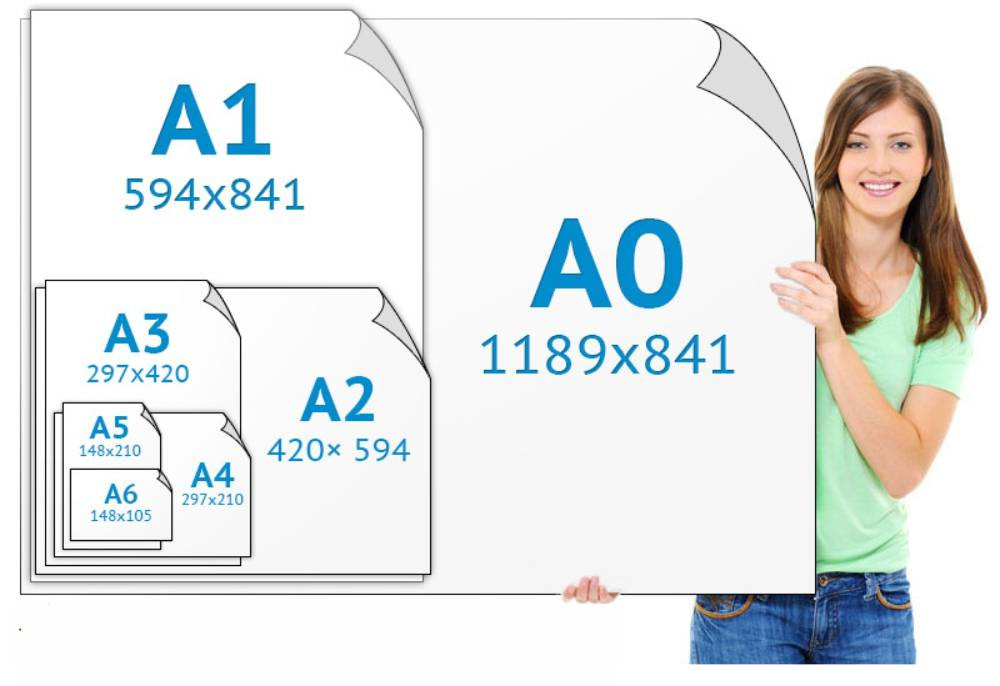
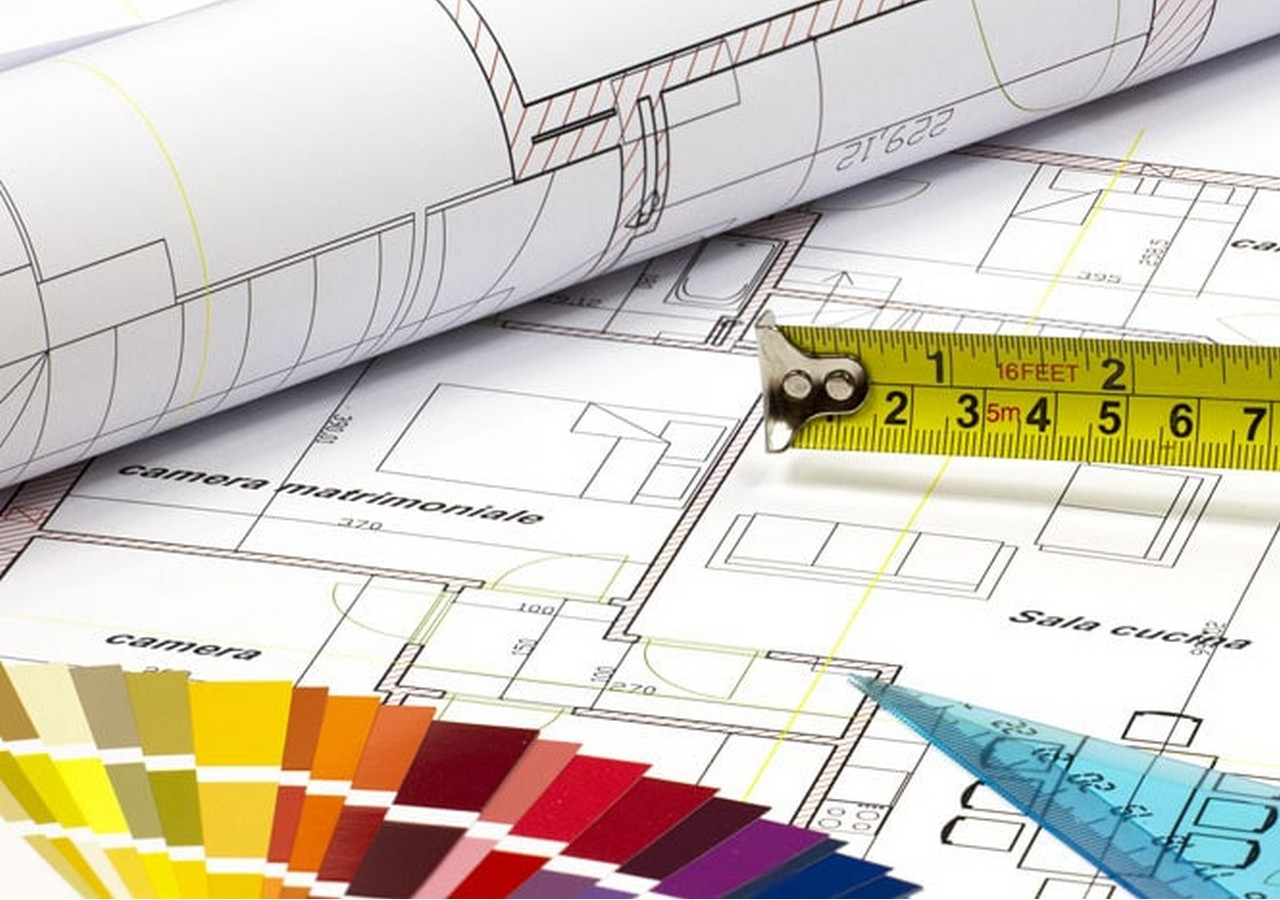

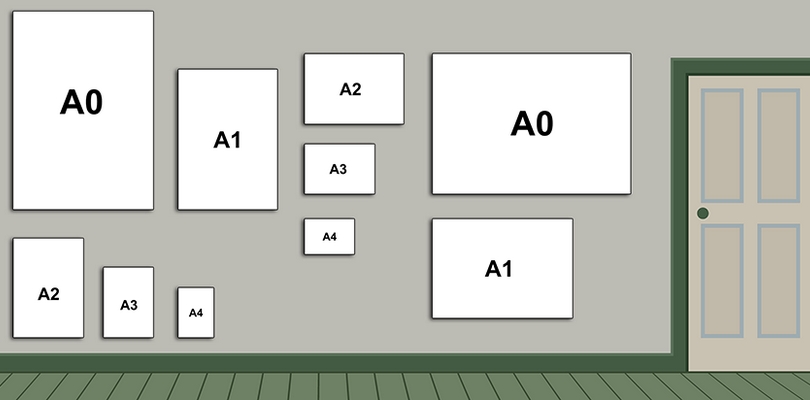
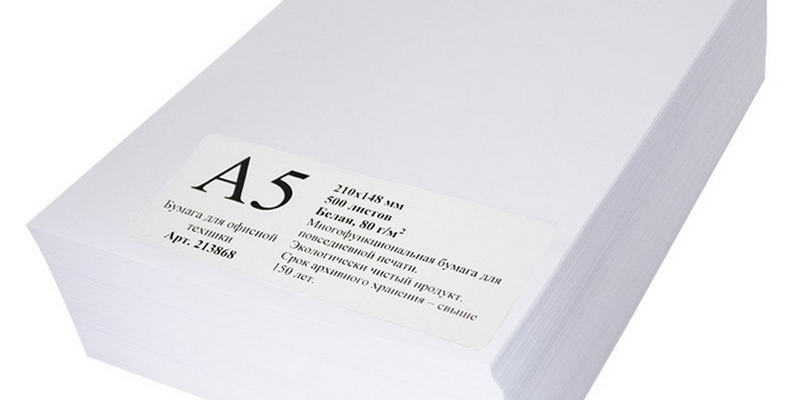
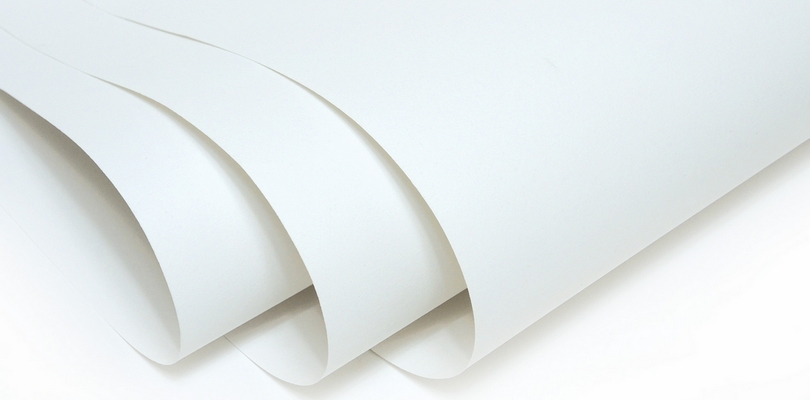
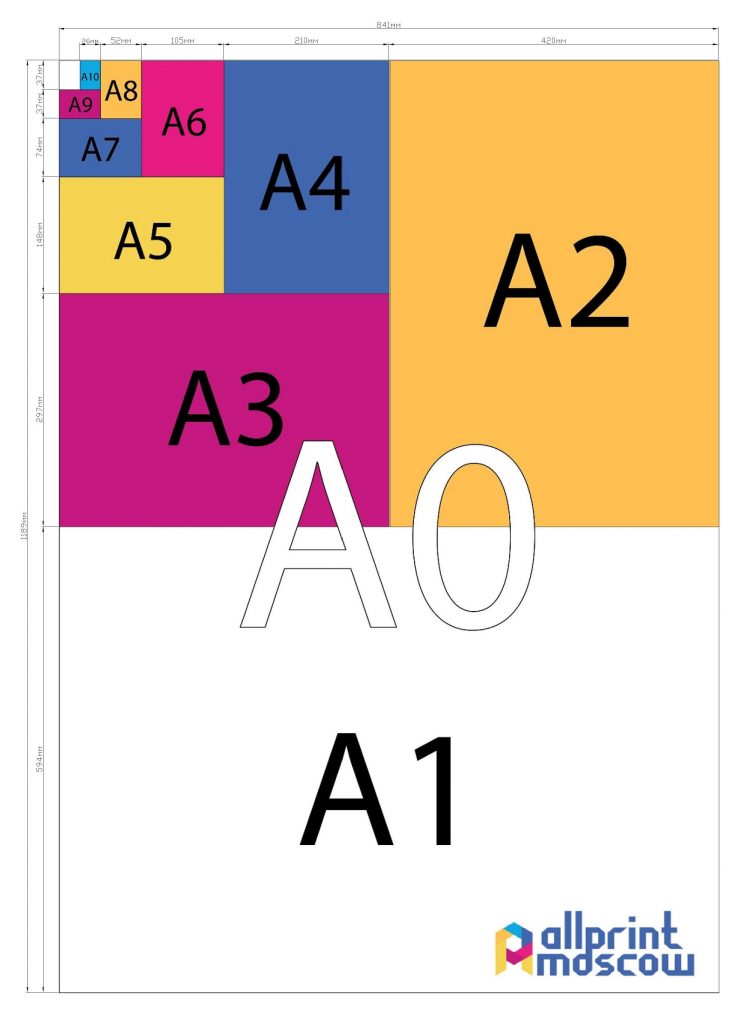
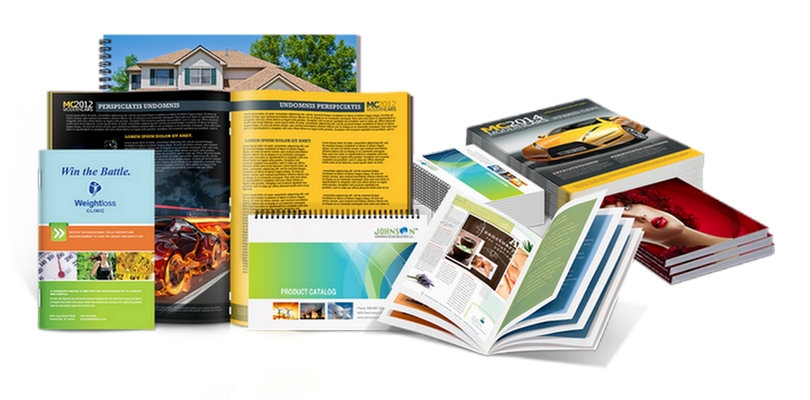


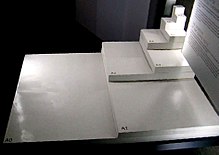
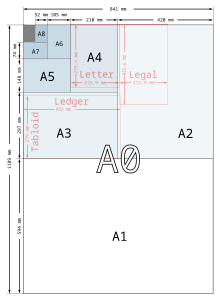


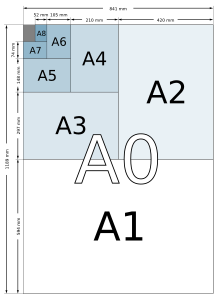
![{\displaystyle {\sqrt[{4}]{2}}\,\mathrm {m} }](https://wikimedia.org/api/rest_v1/media/math/render/svg/97d82dd8f2645a66bf053172e4268359a245c51c)
![{\displaystyle {\frac {1}{\sqrt[{4}]{2}}}\,\mathrm {m} }](https://wikimedia.org/api/rest_v1/media/math/render/svg/99d750ffbb6d340f78a74dd4aa168cf04b8e12af)





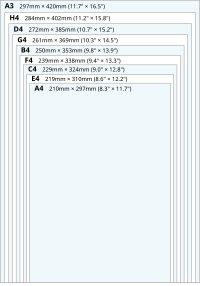
![{\textstyle n=0..10,r={\sqrt[{16}]{2}},s={\sqrt {\frac {1}{2}}}}](https://wikimedia.org/api/rest_v1/media/math/render/svg/b25544e90982146c729e387c45766b006db8f746)
